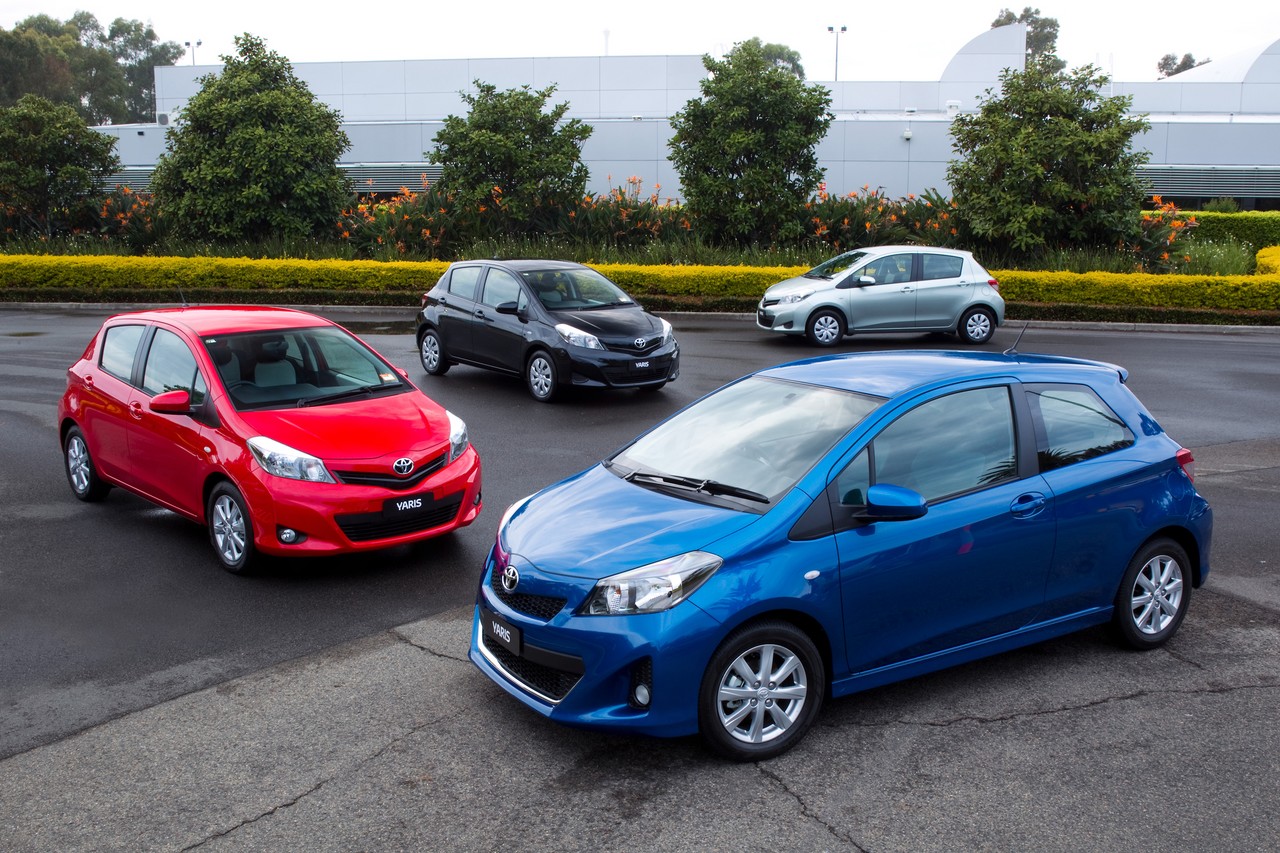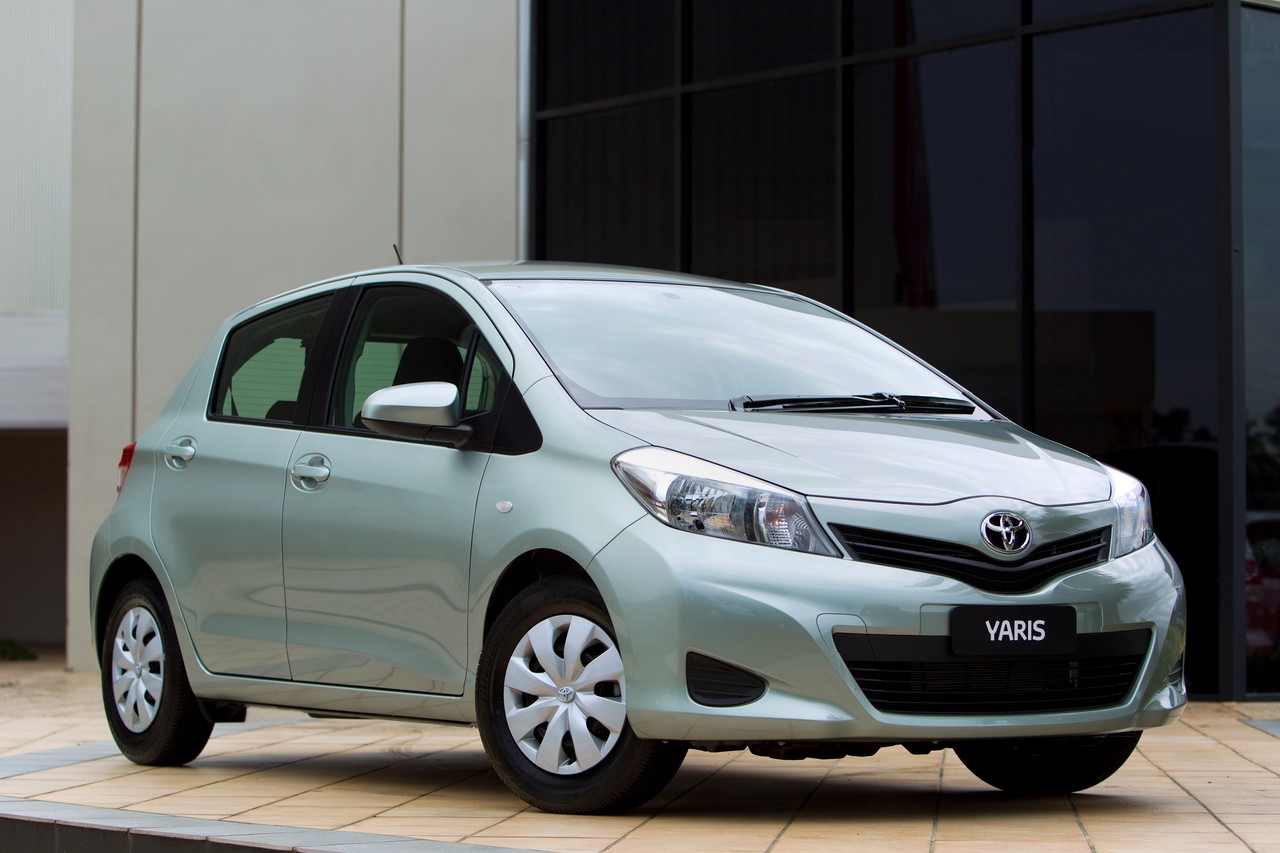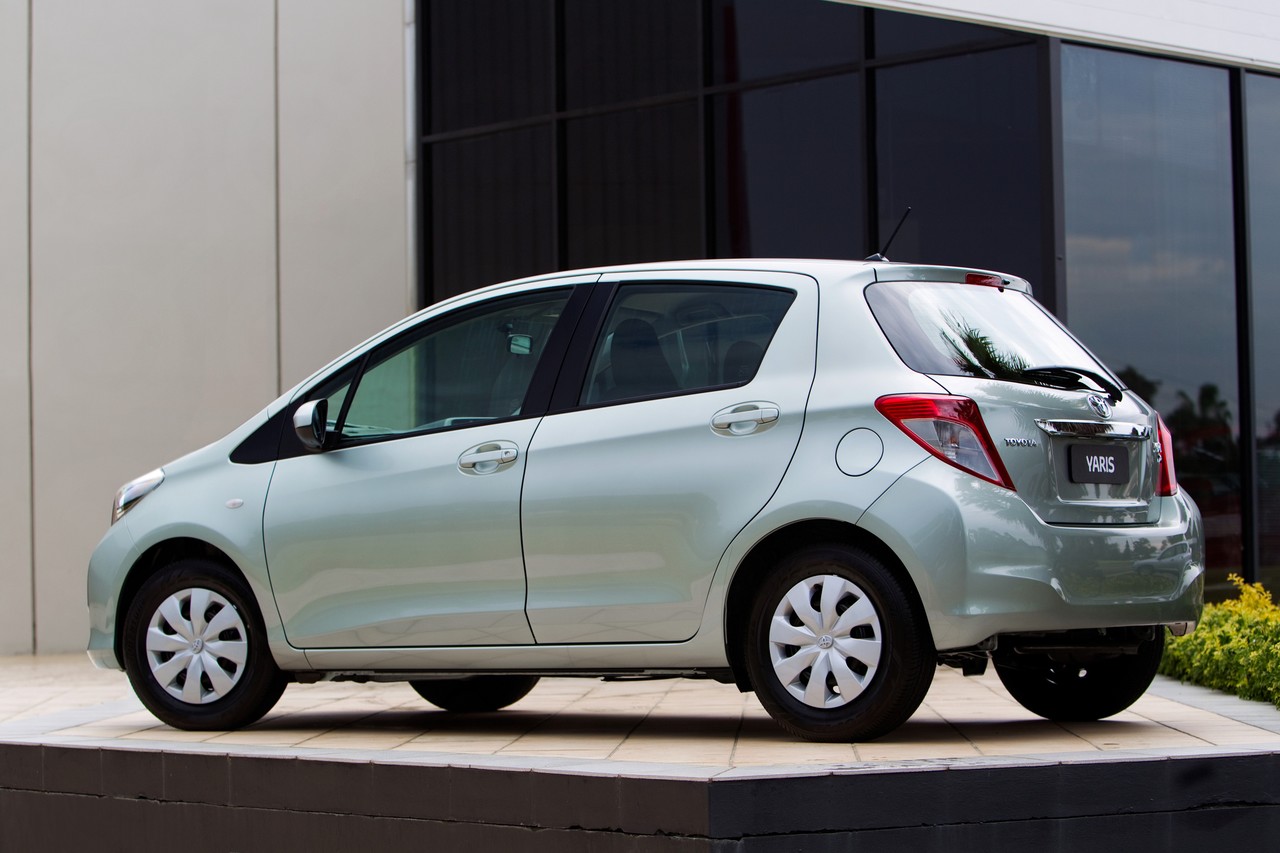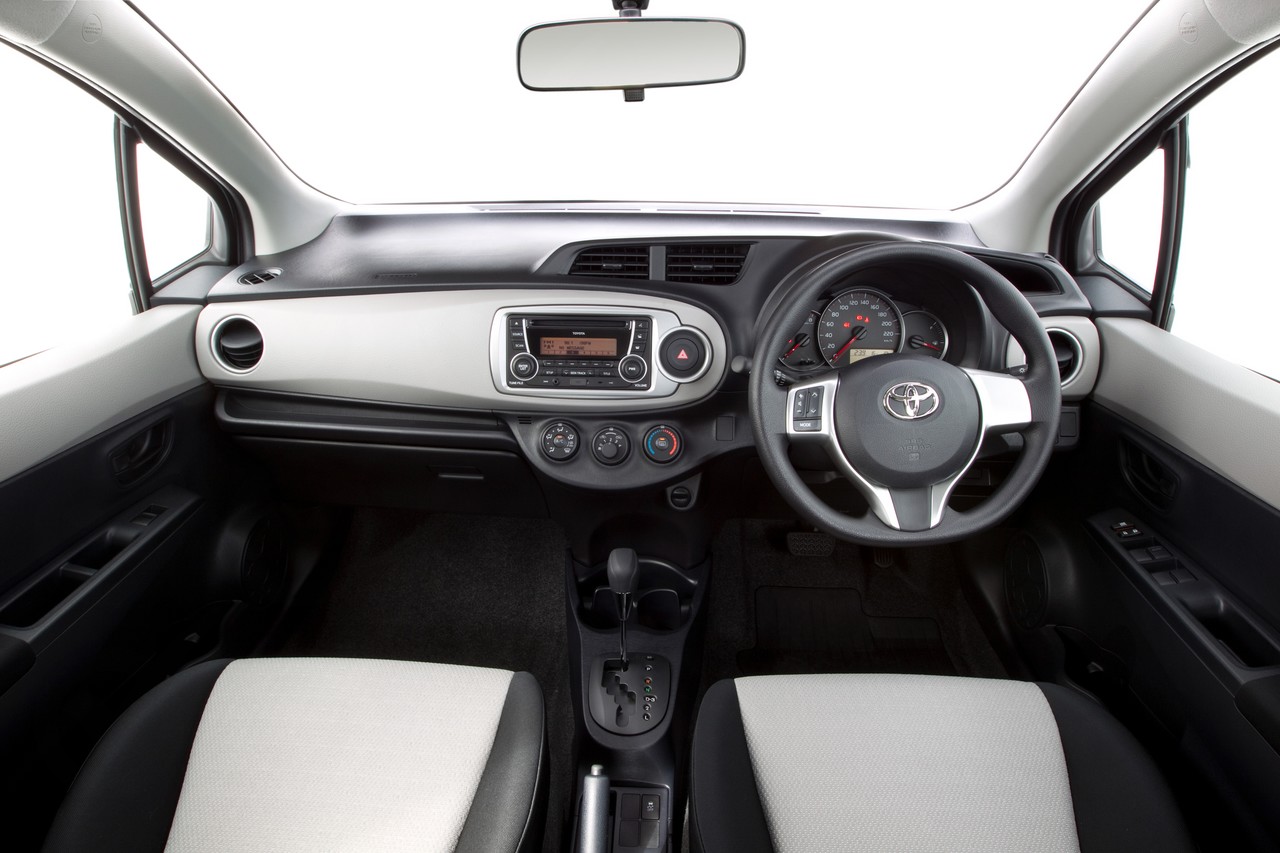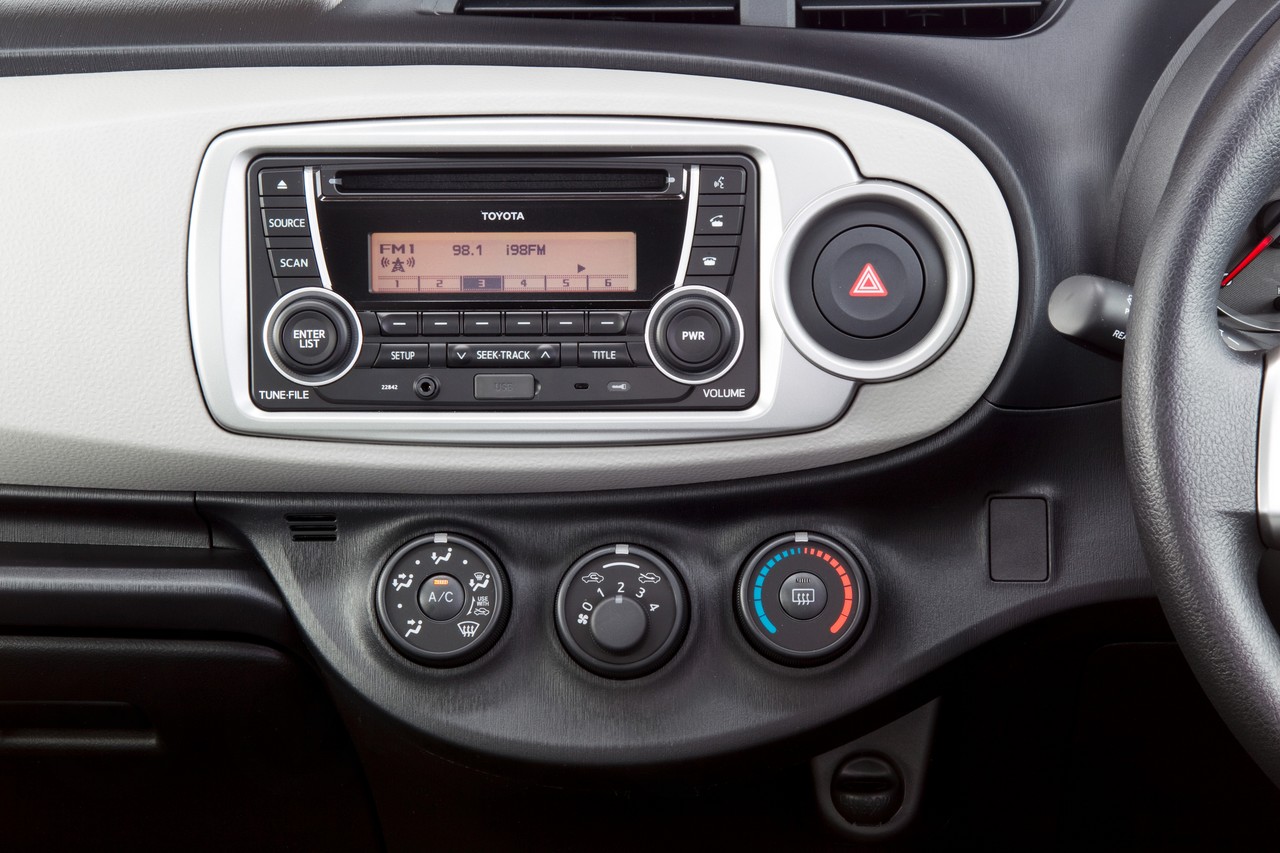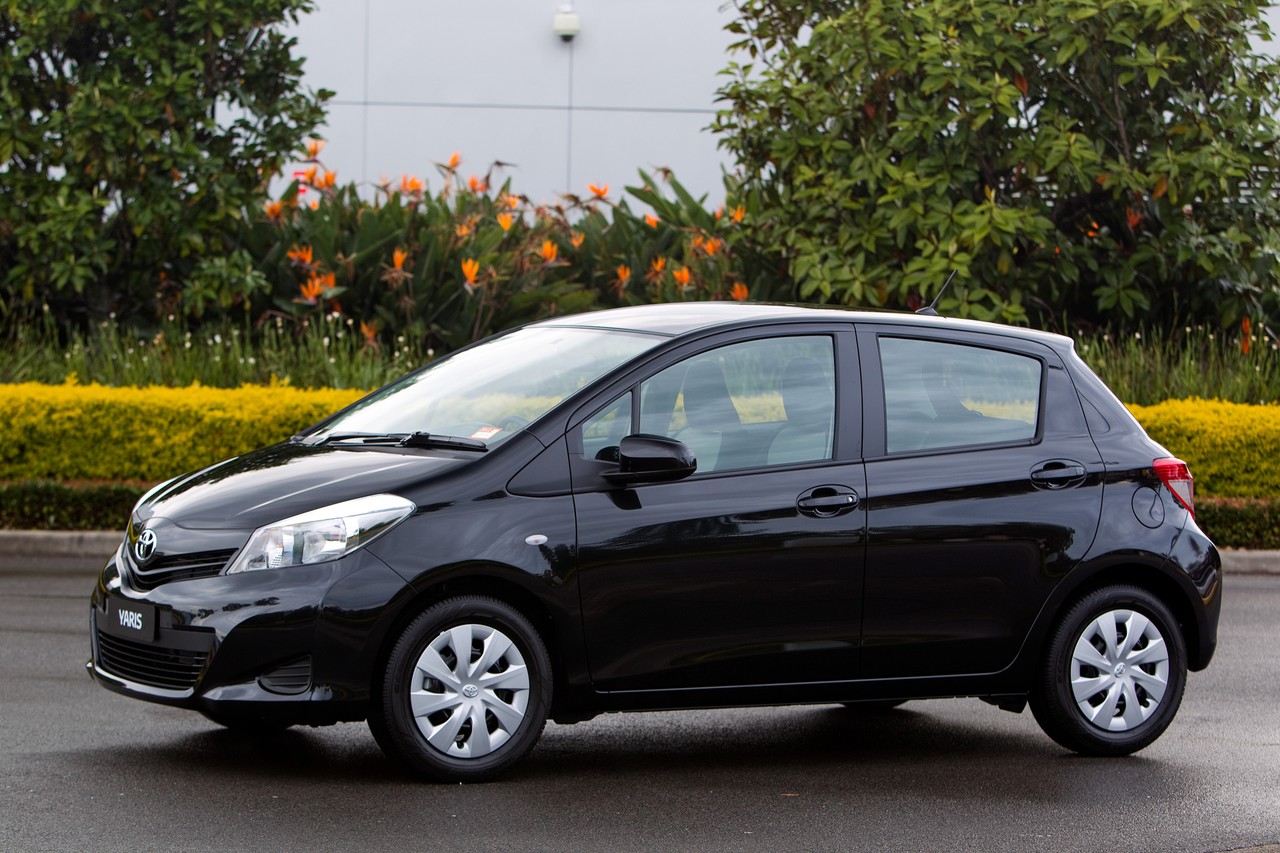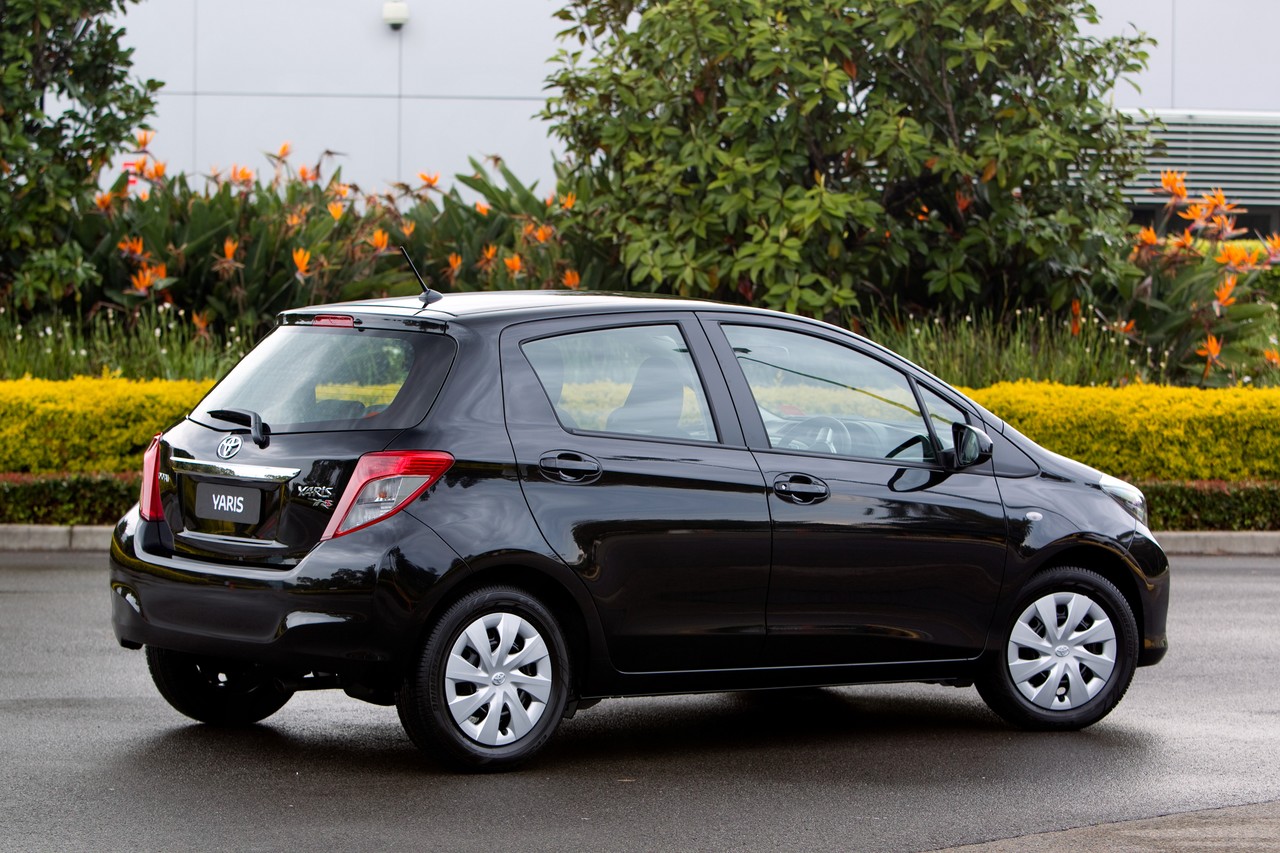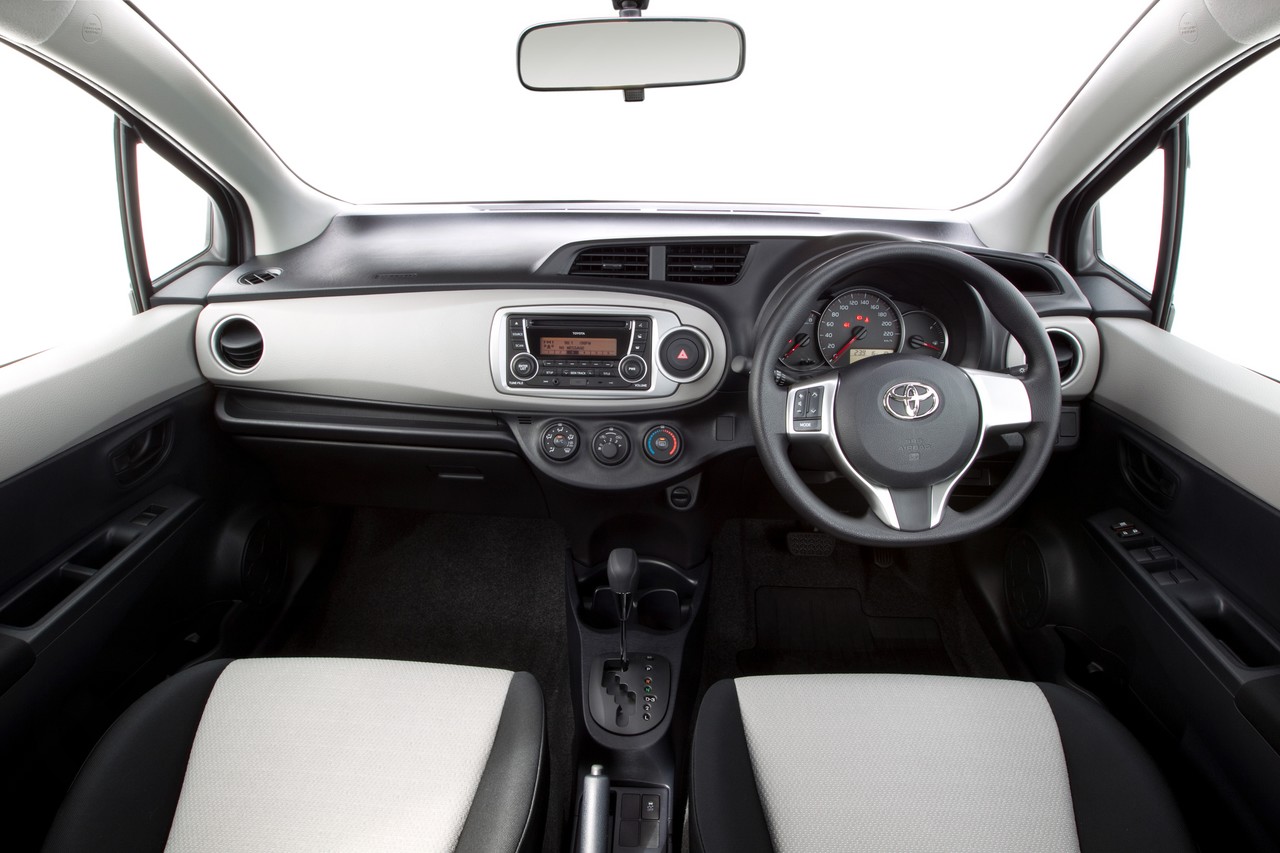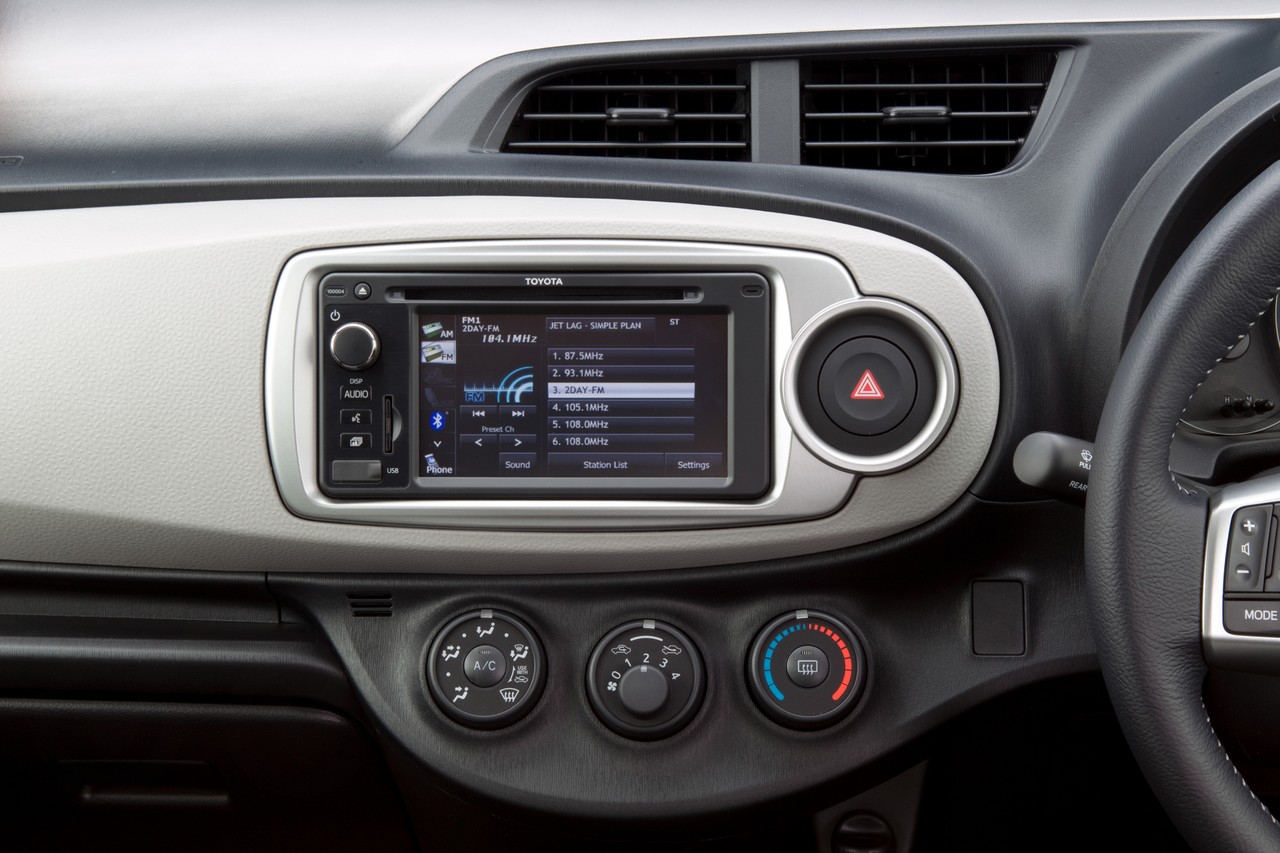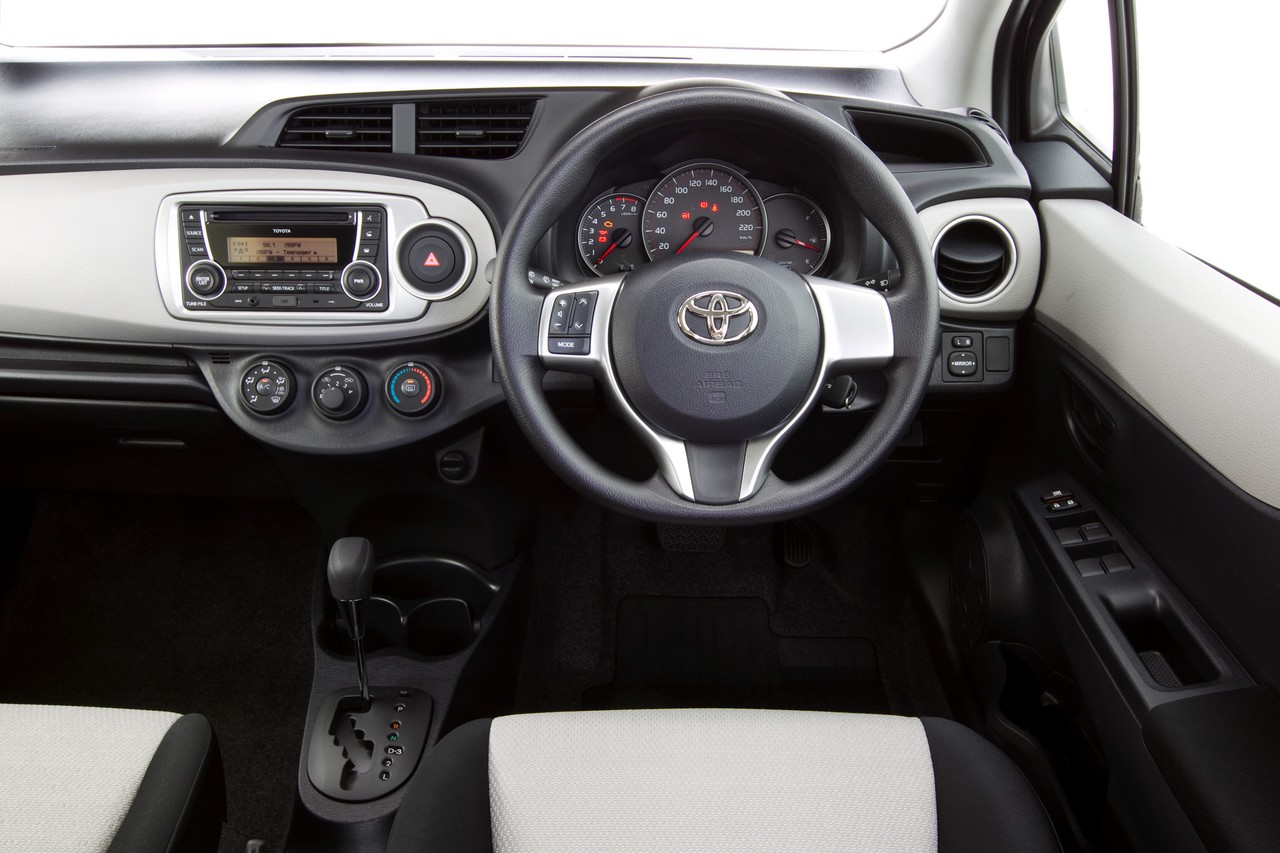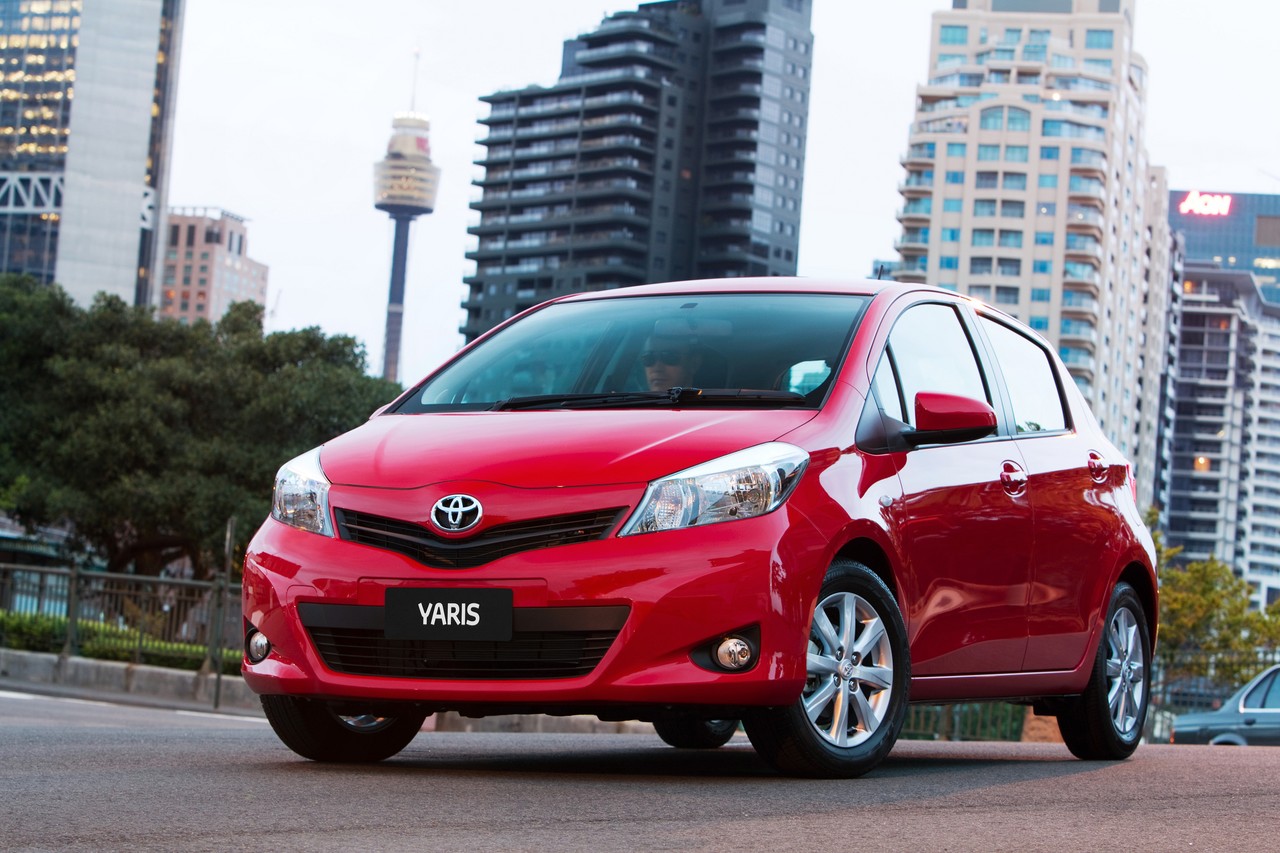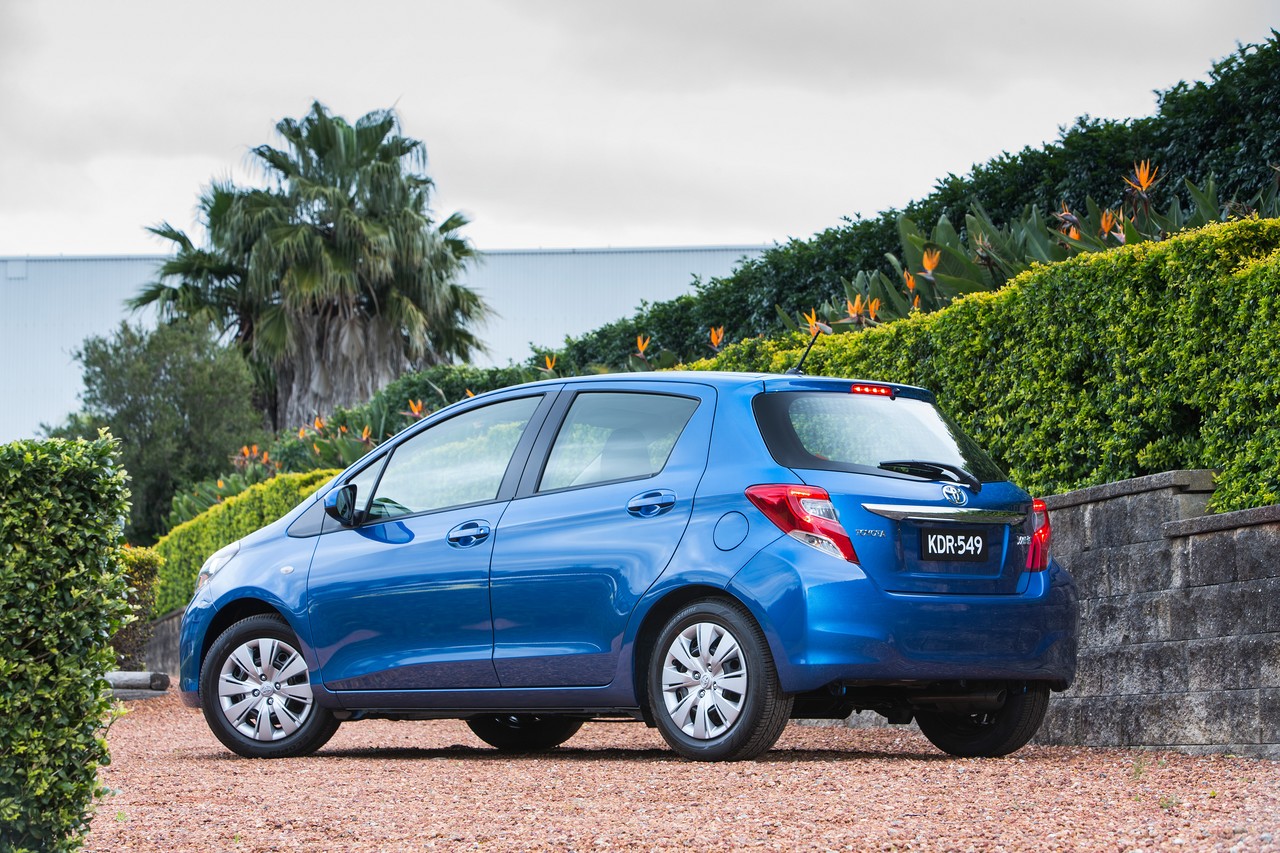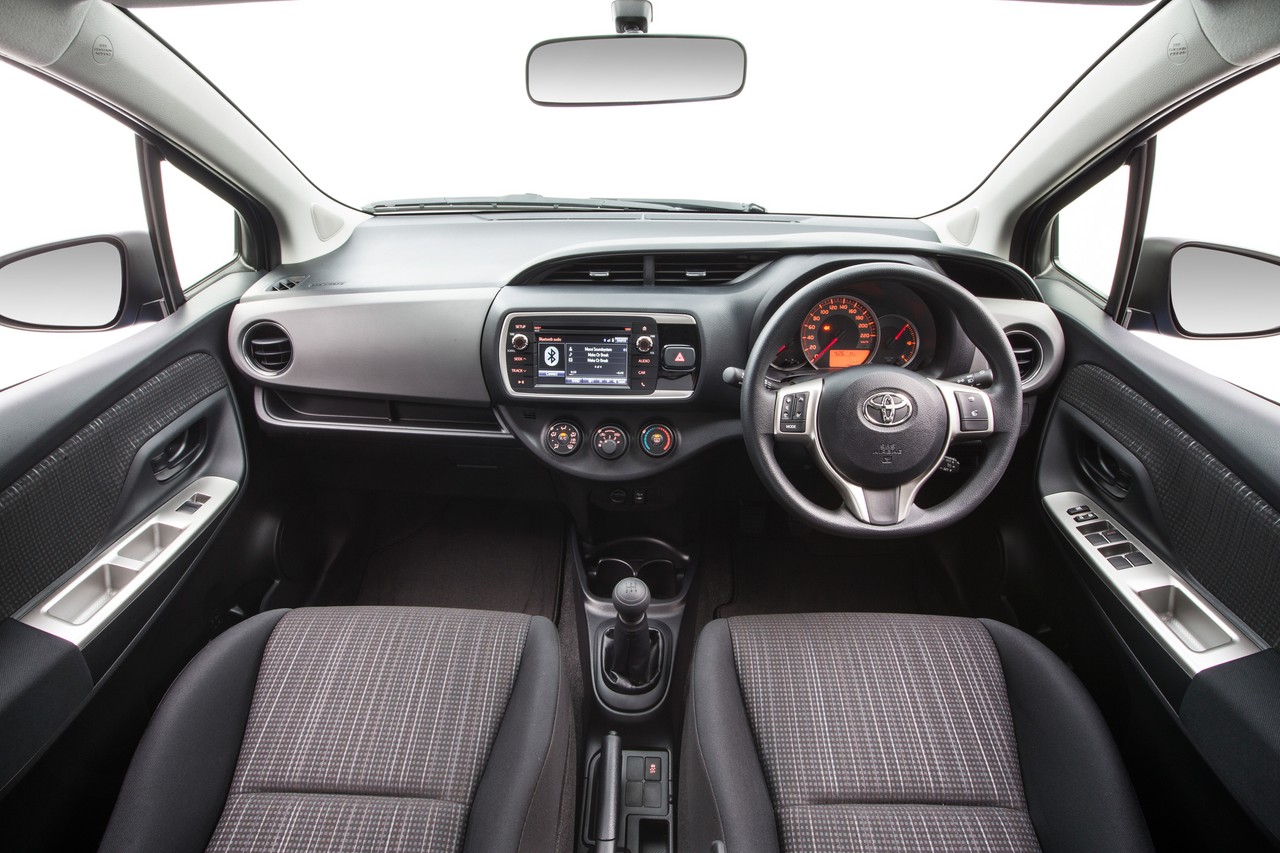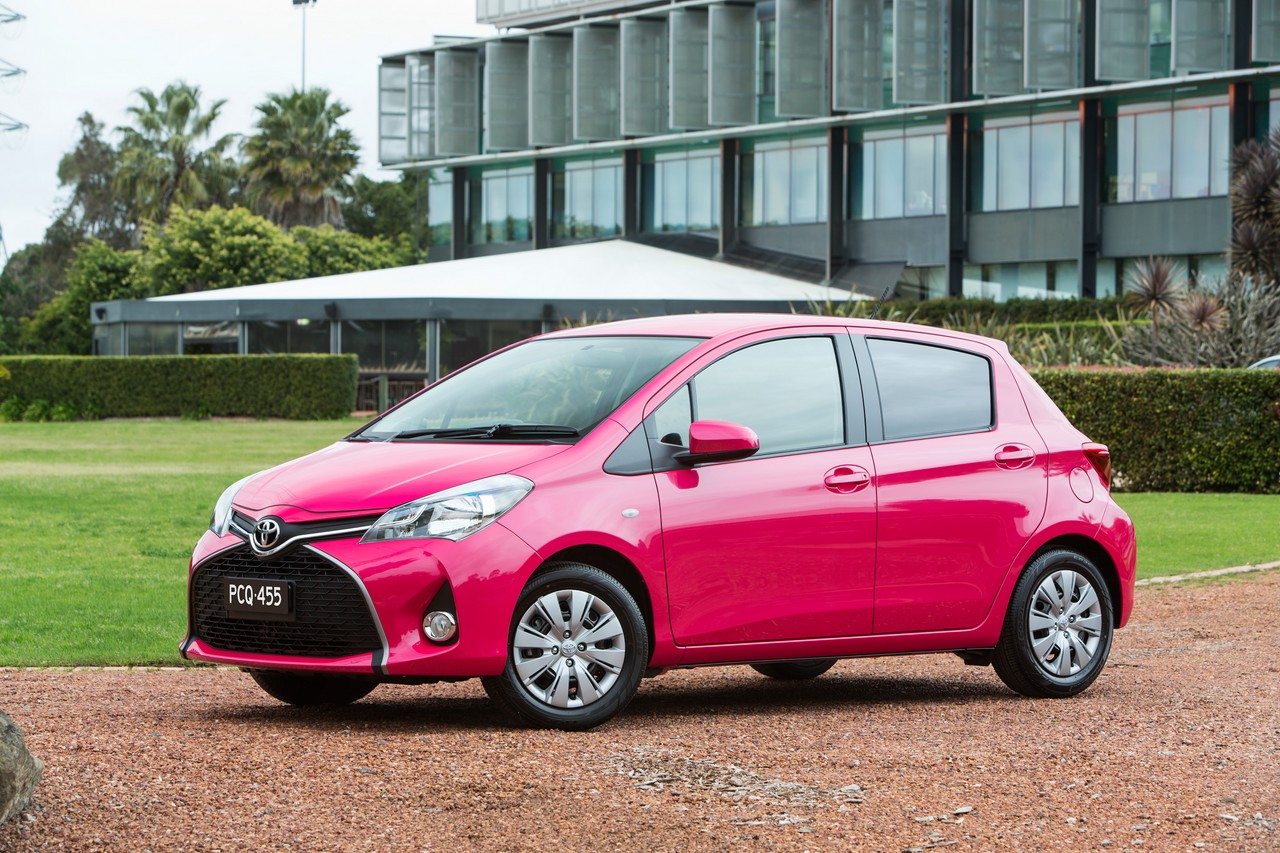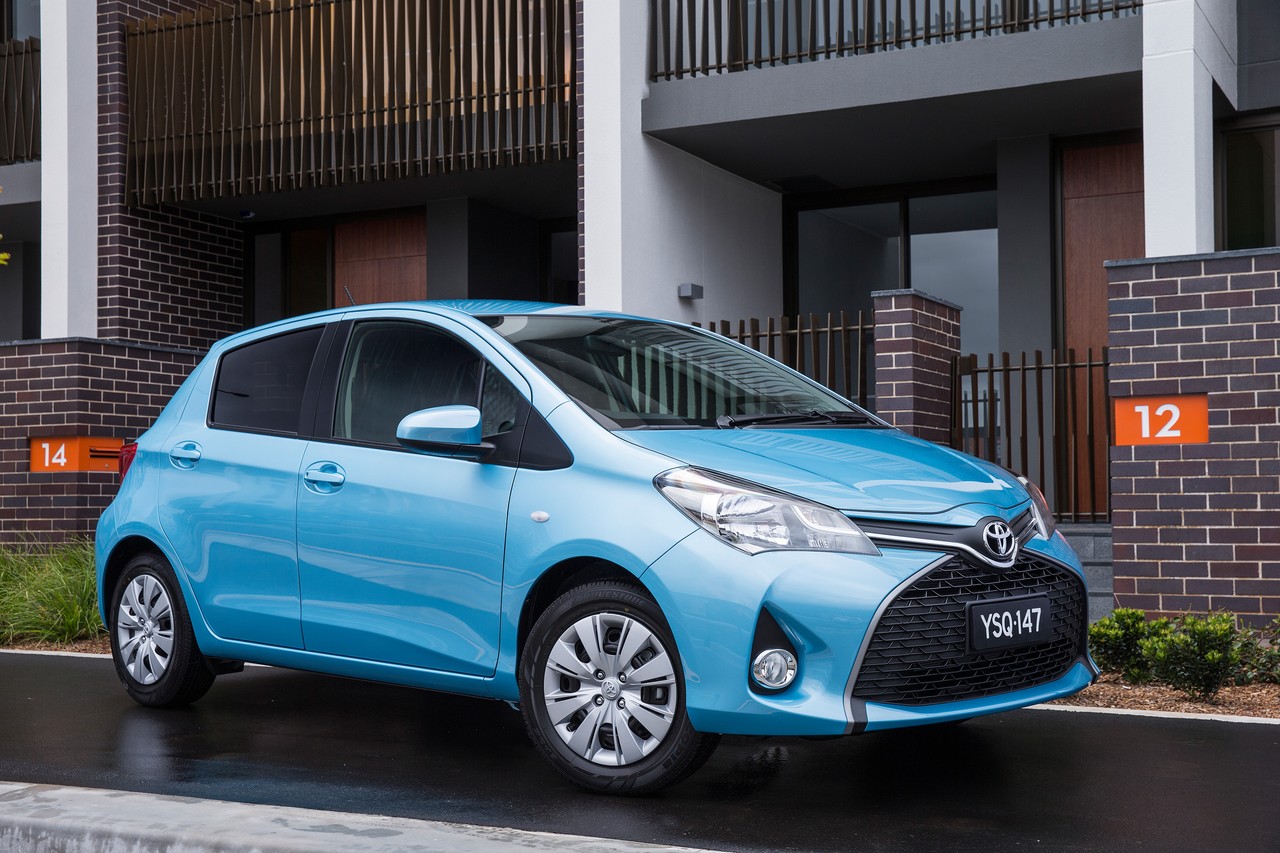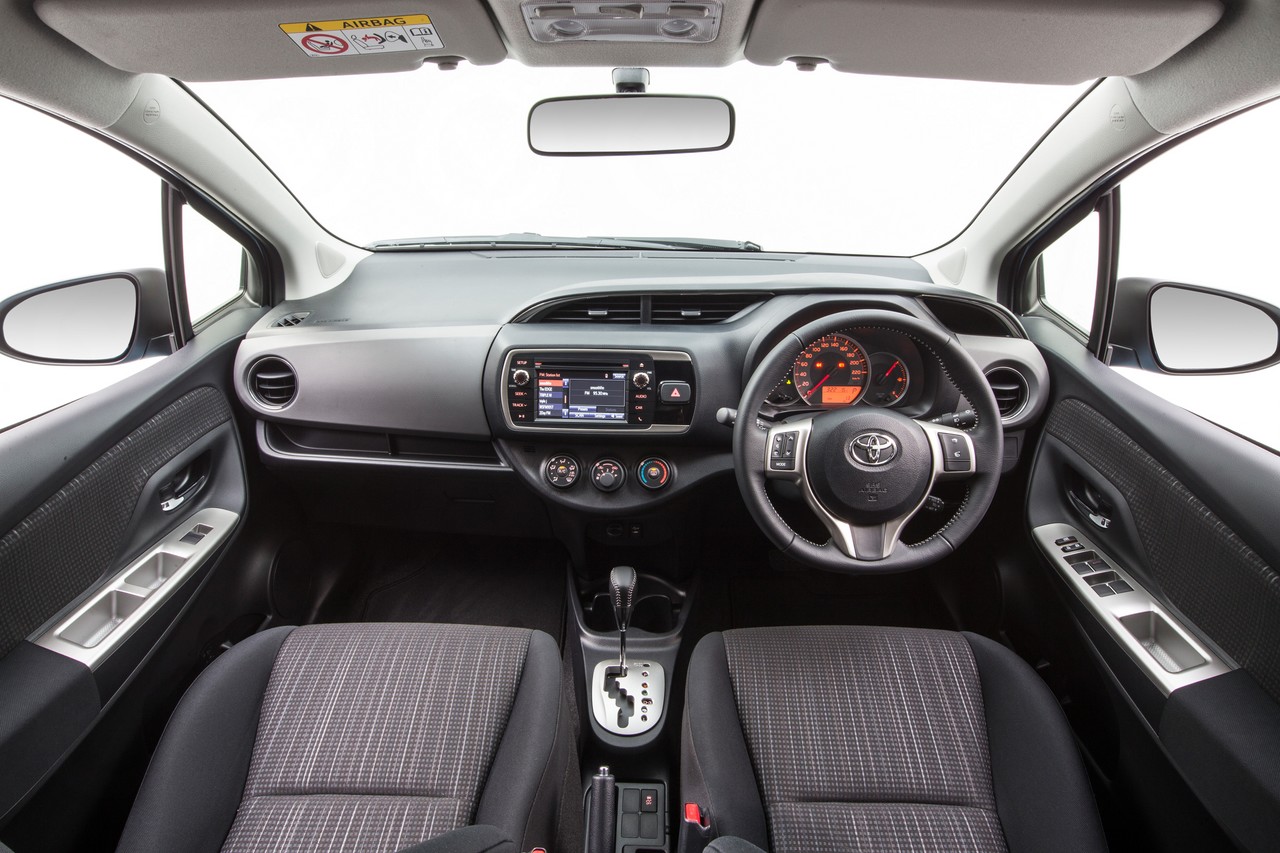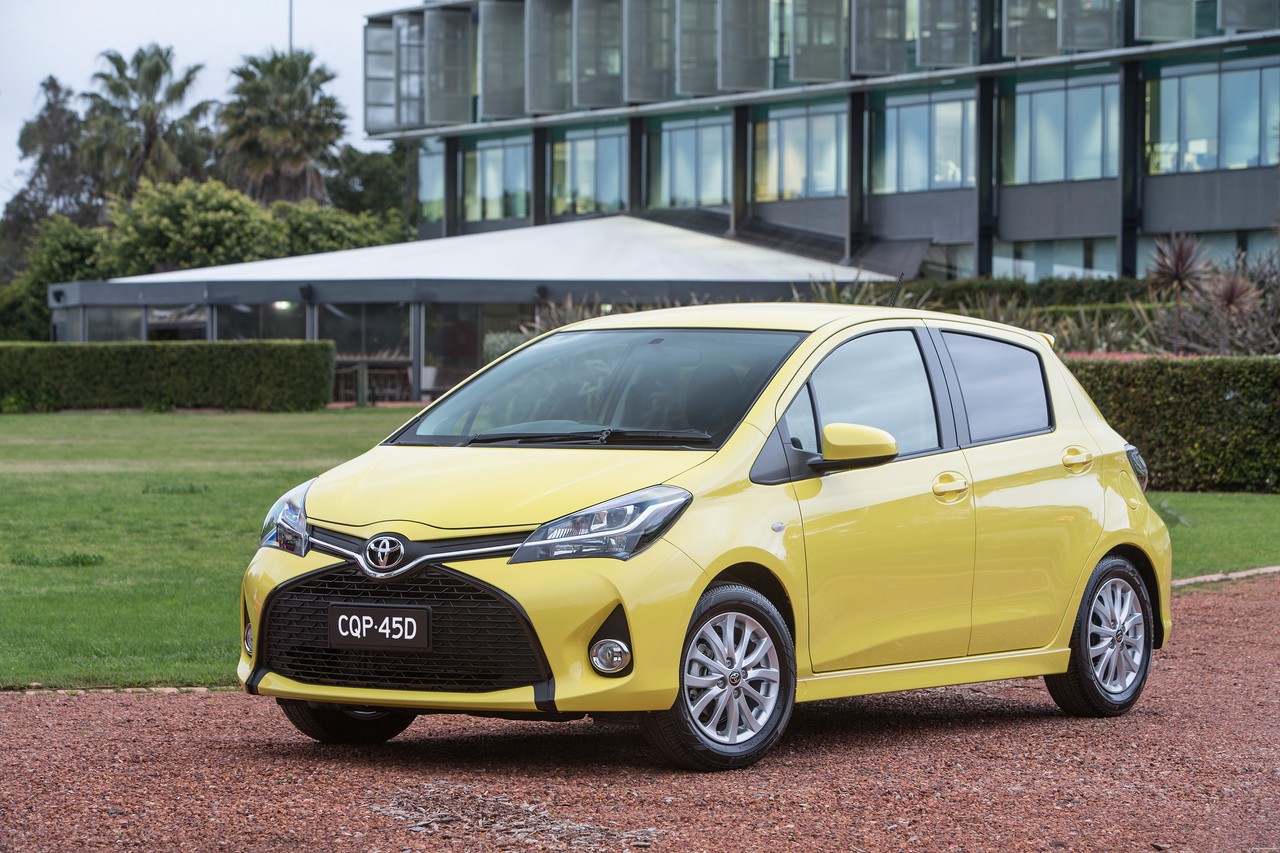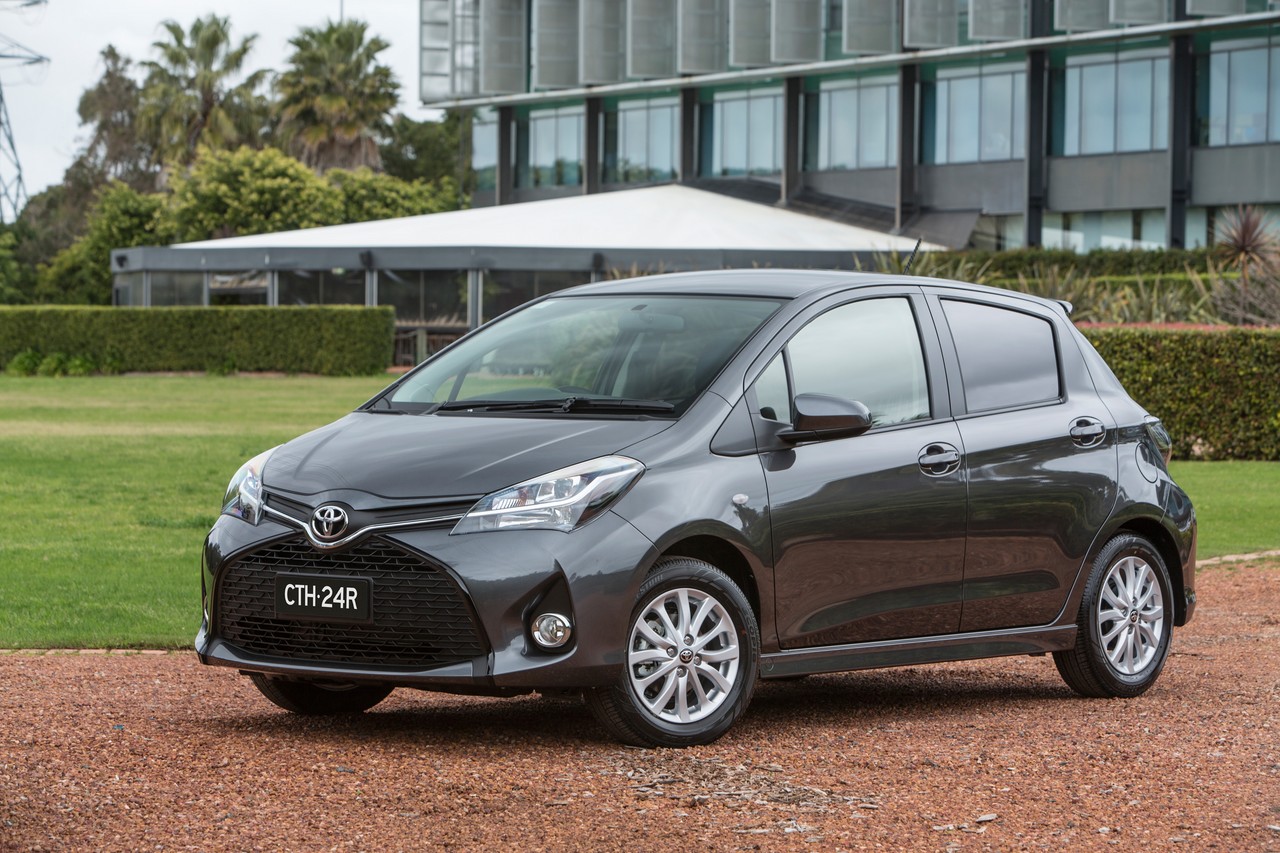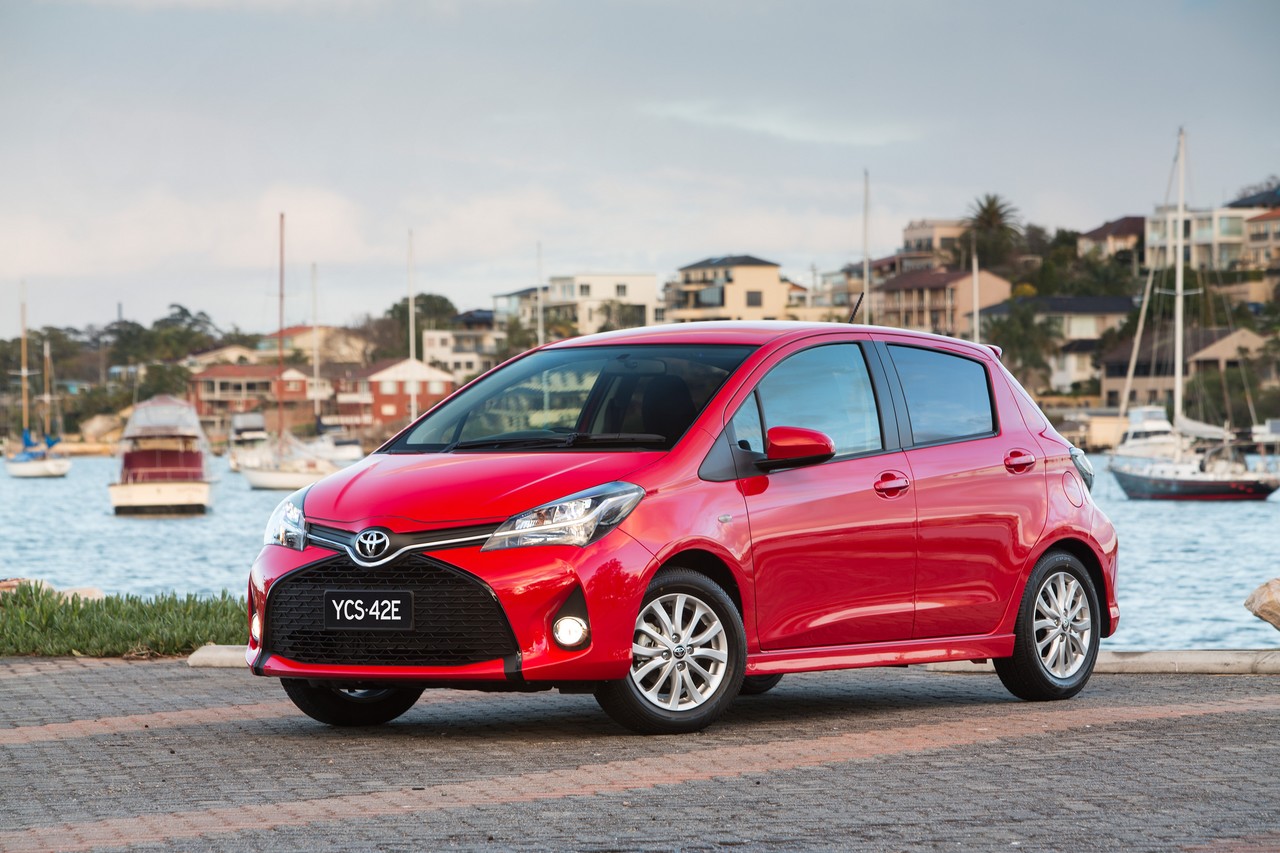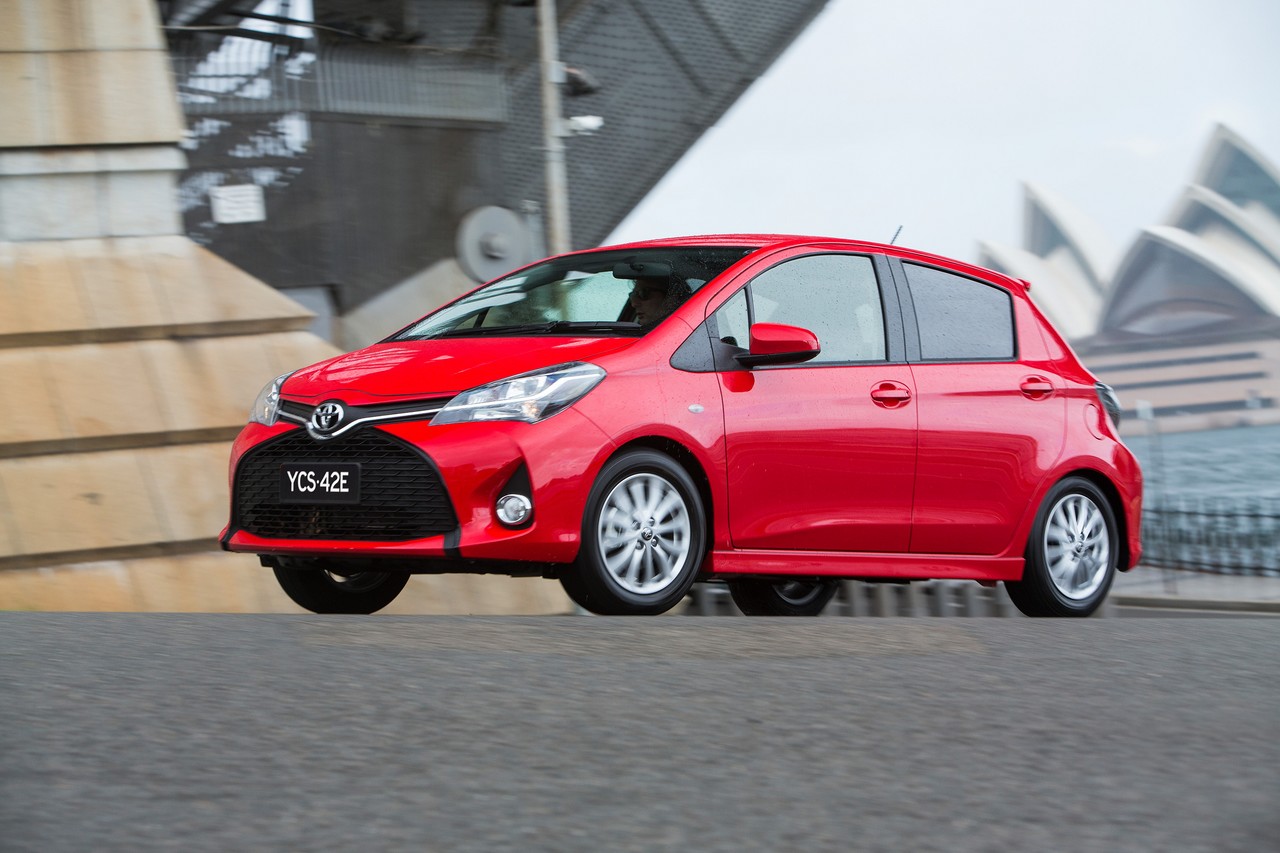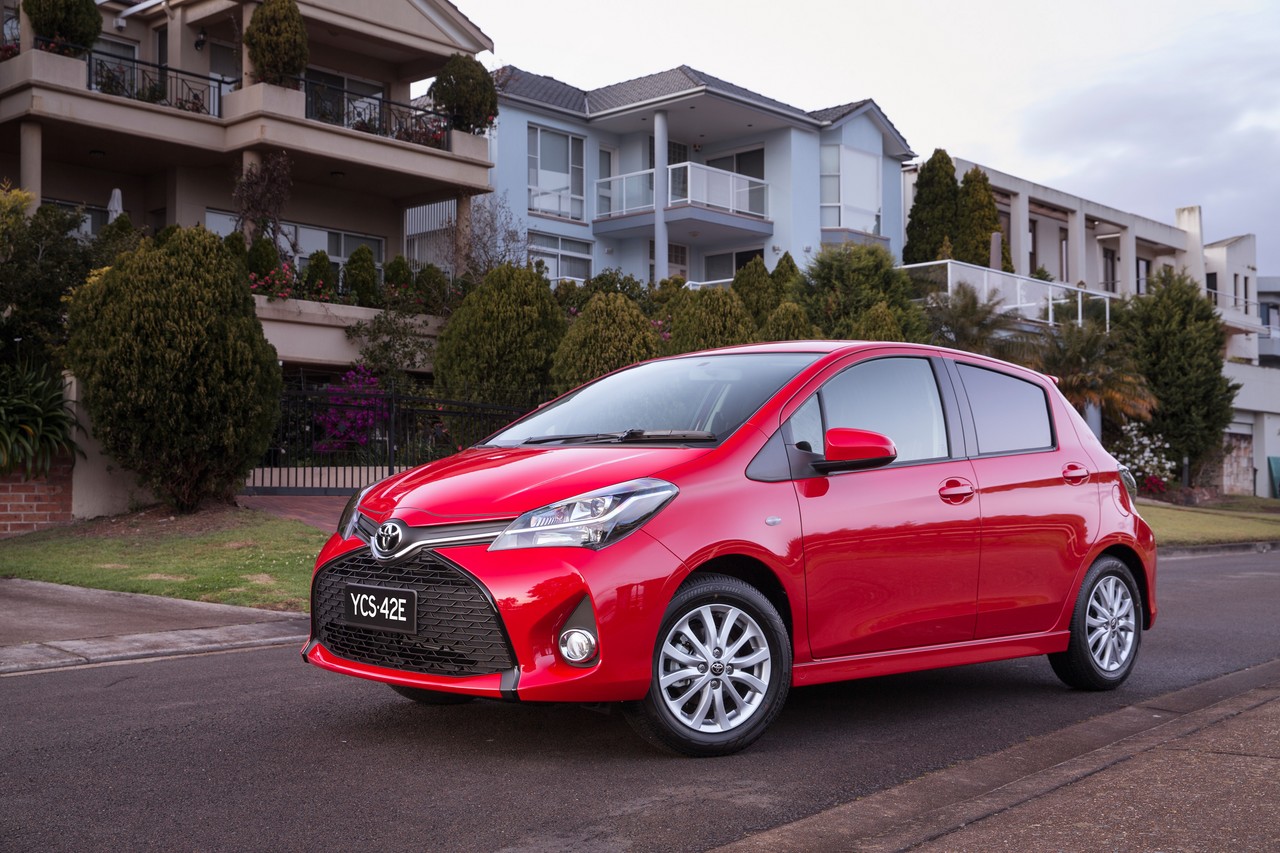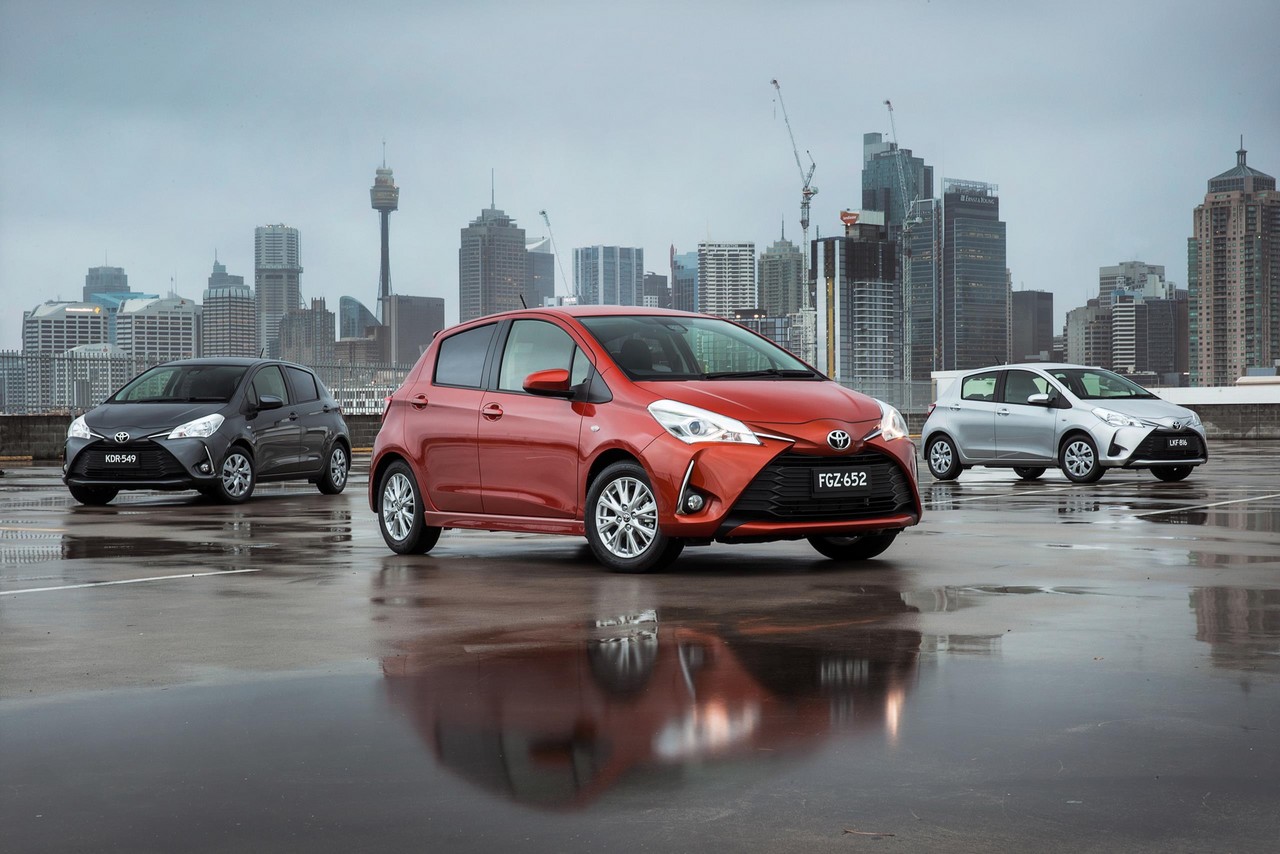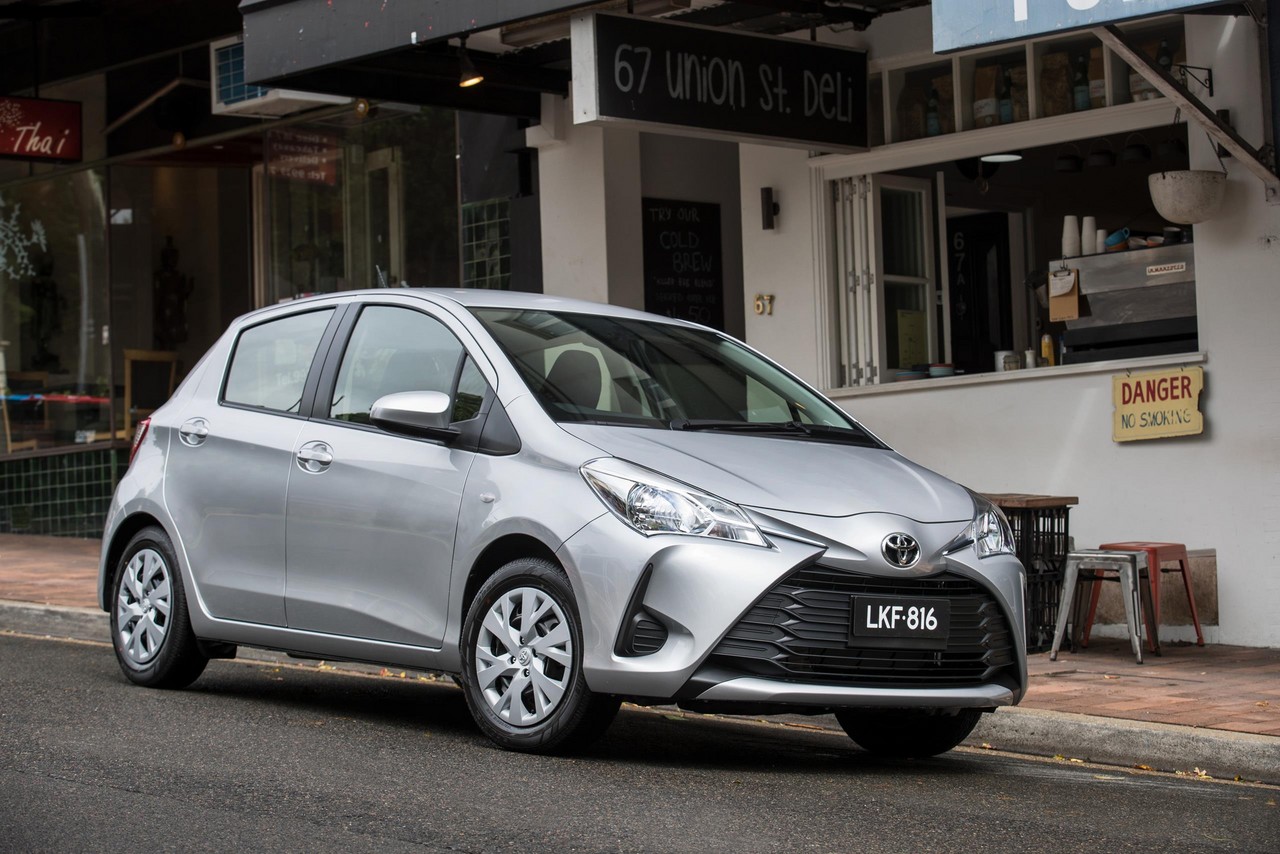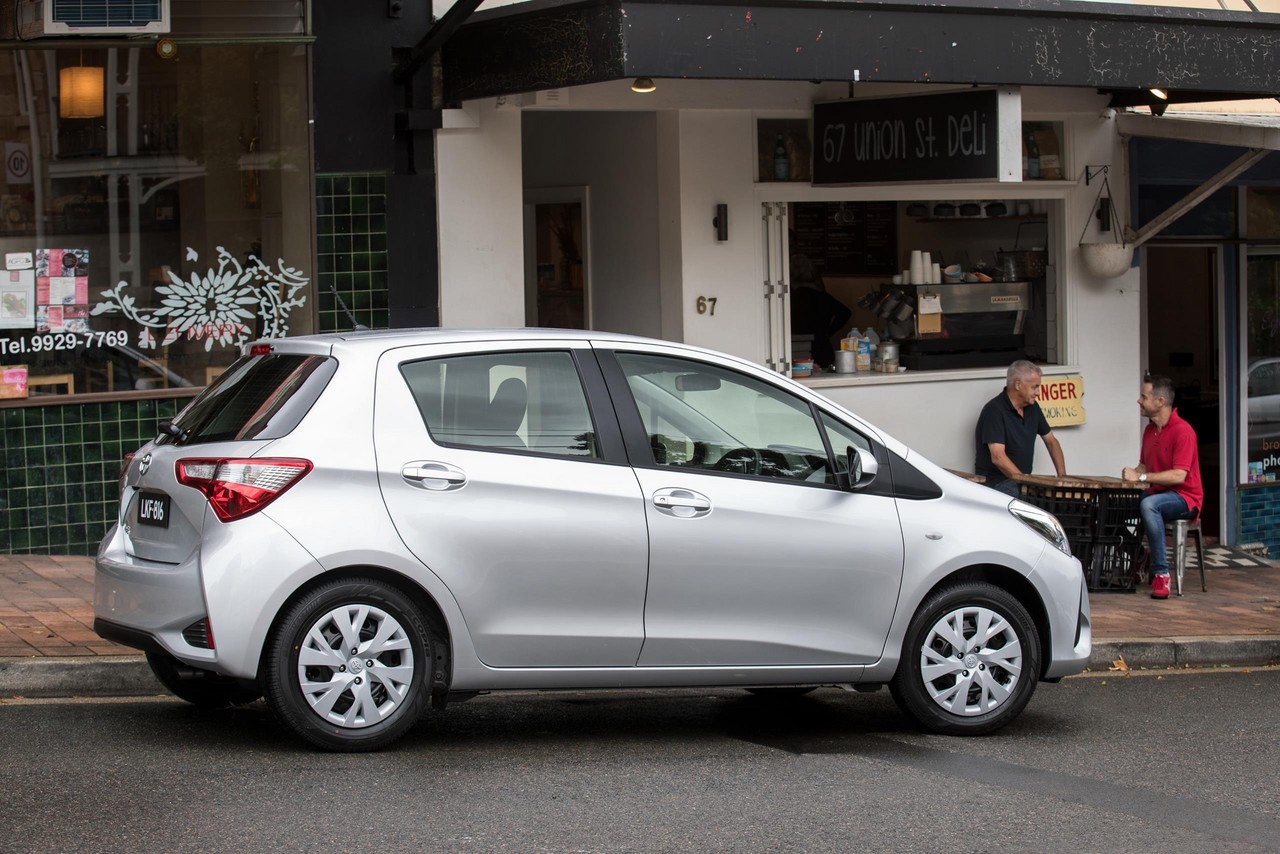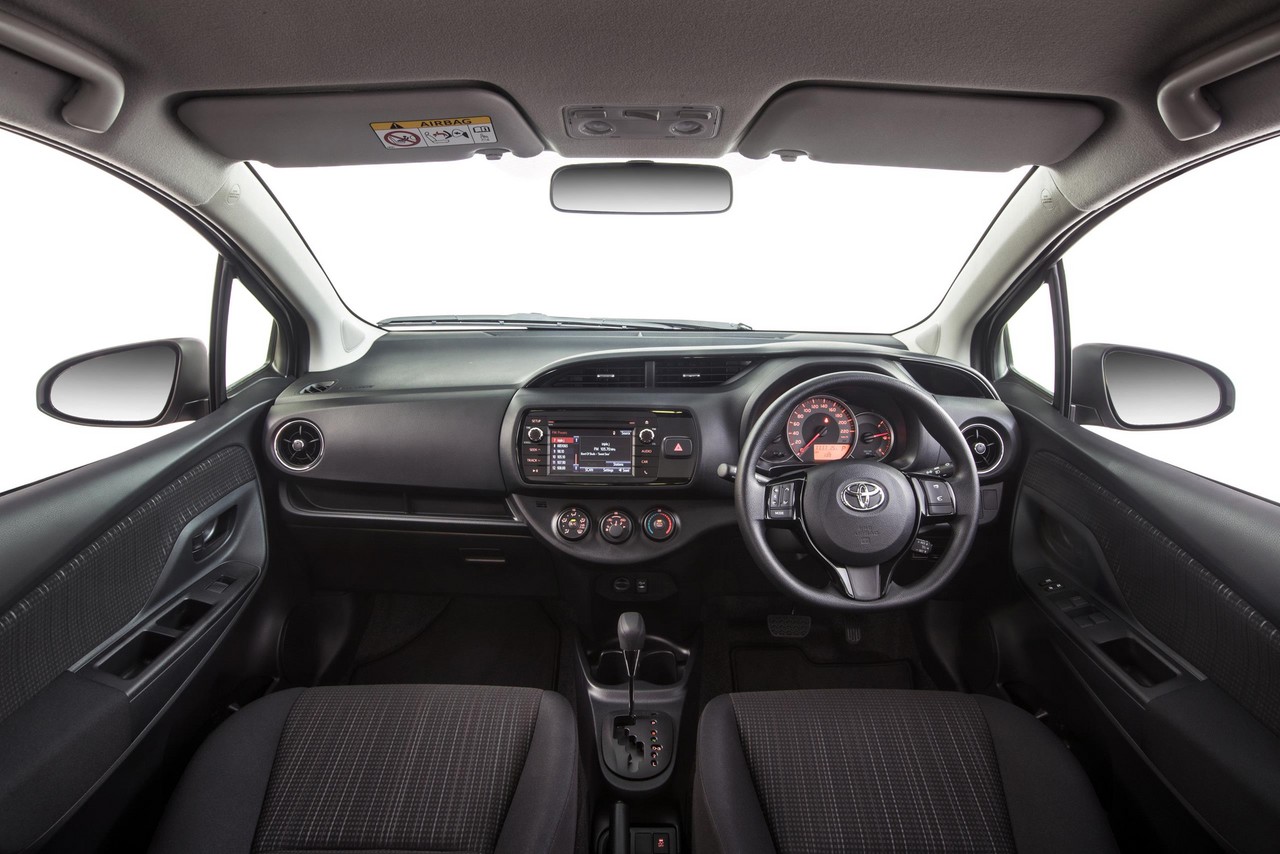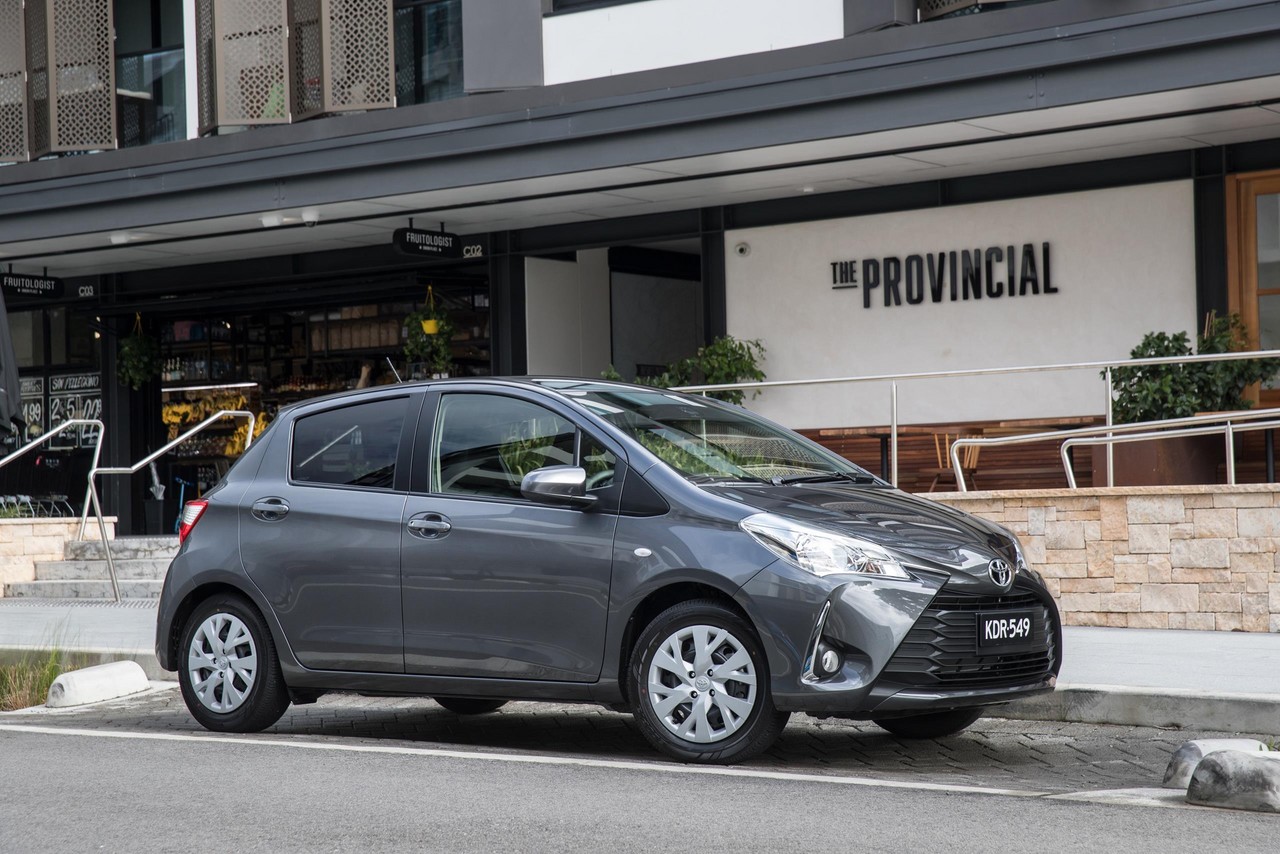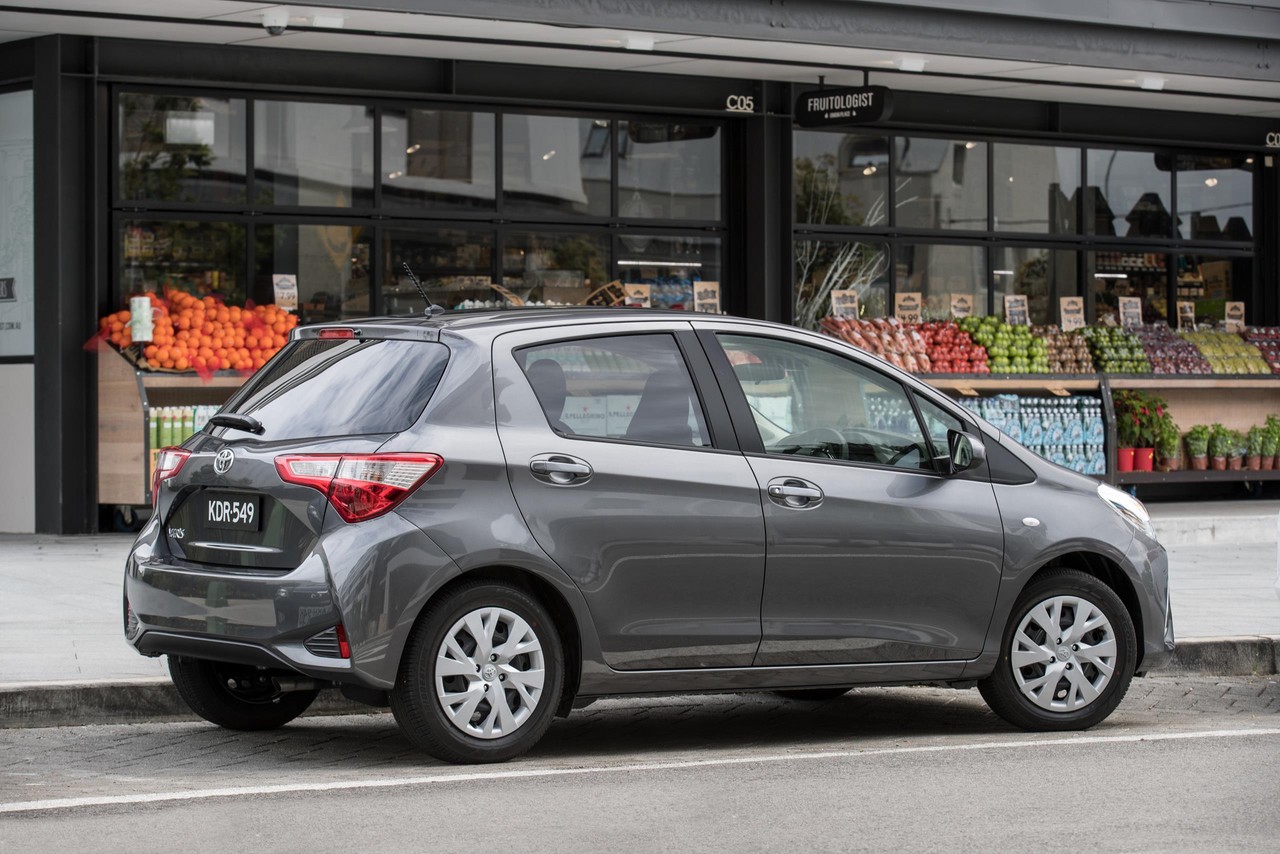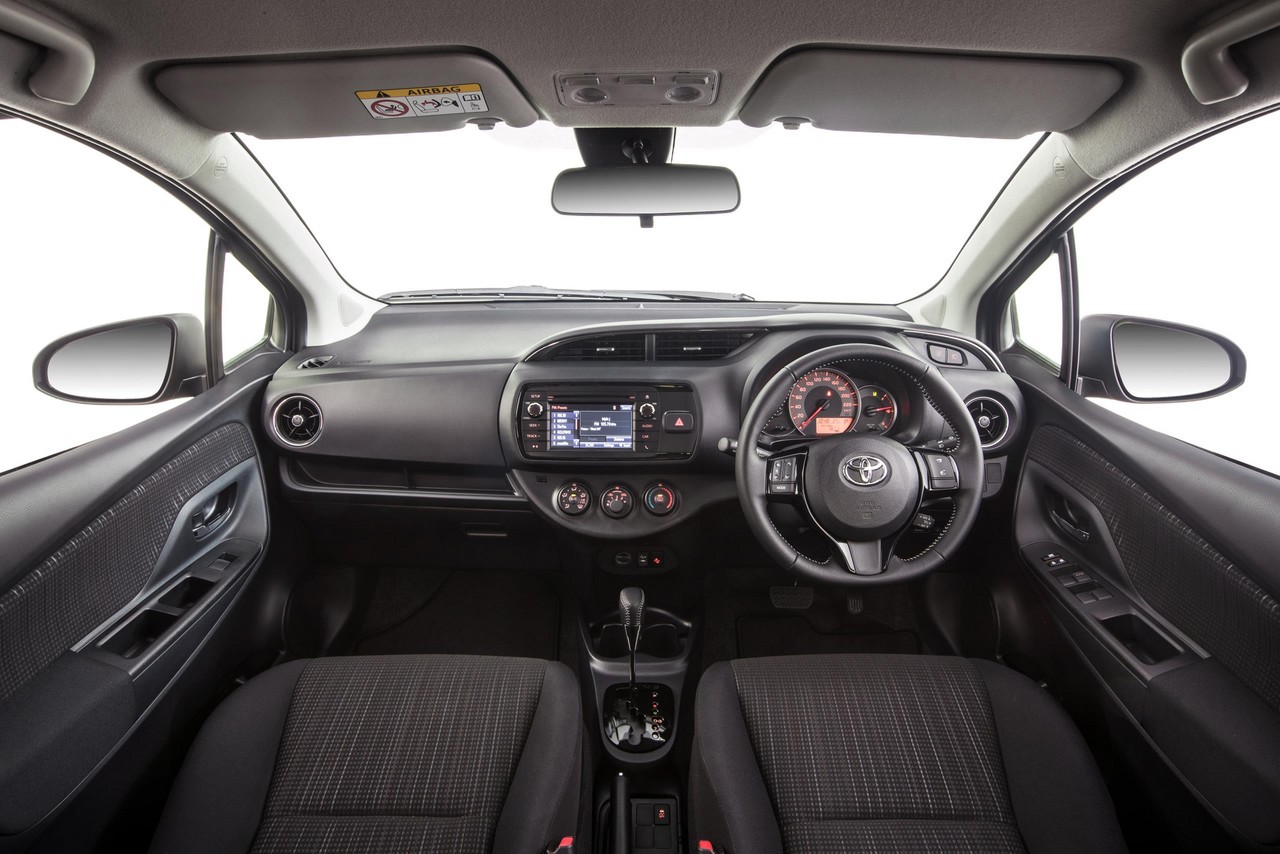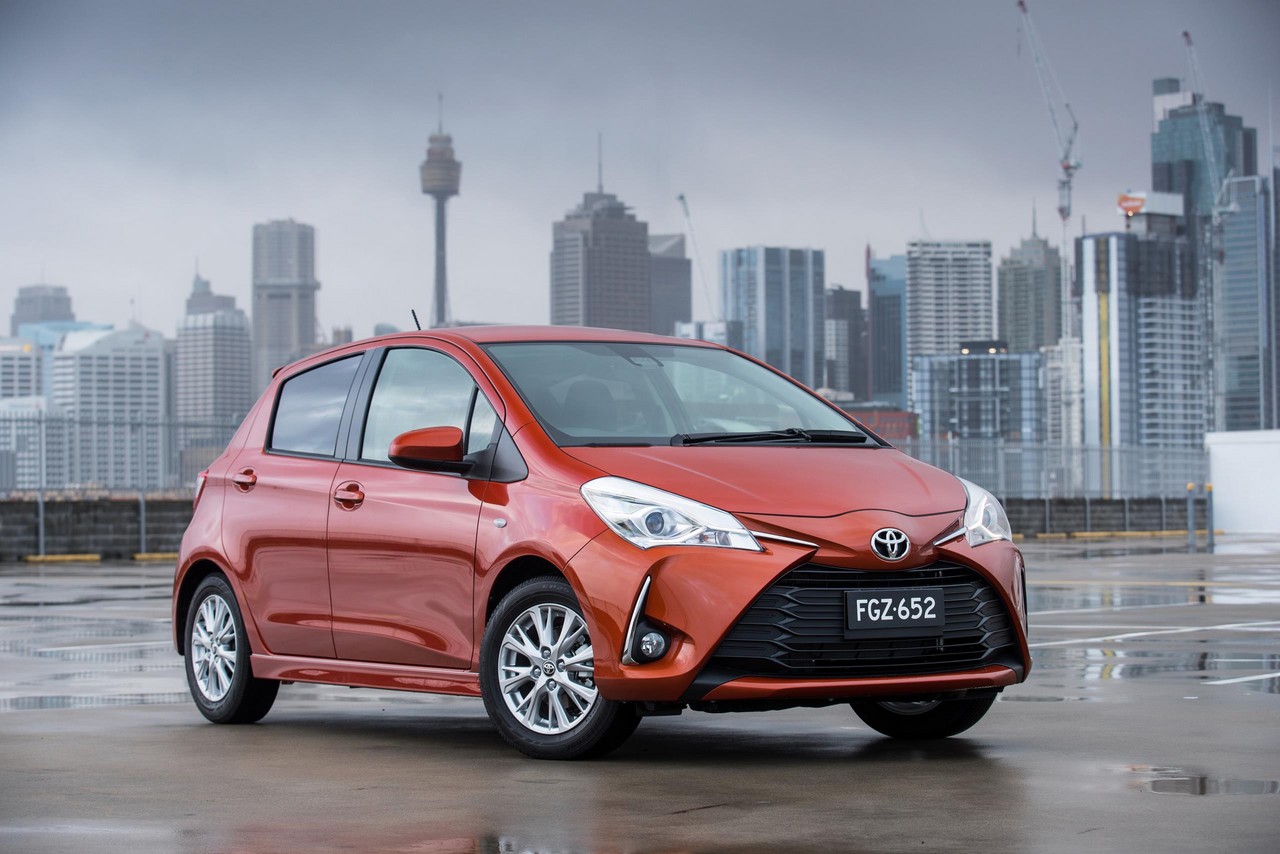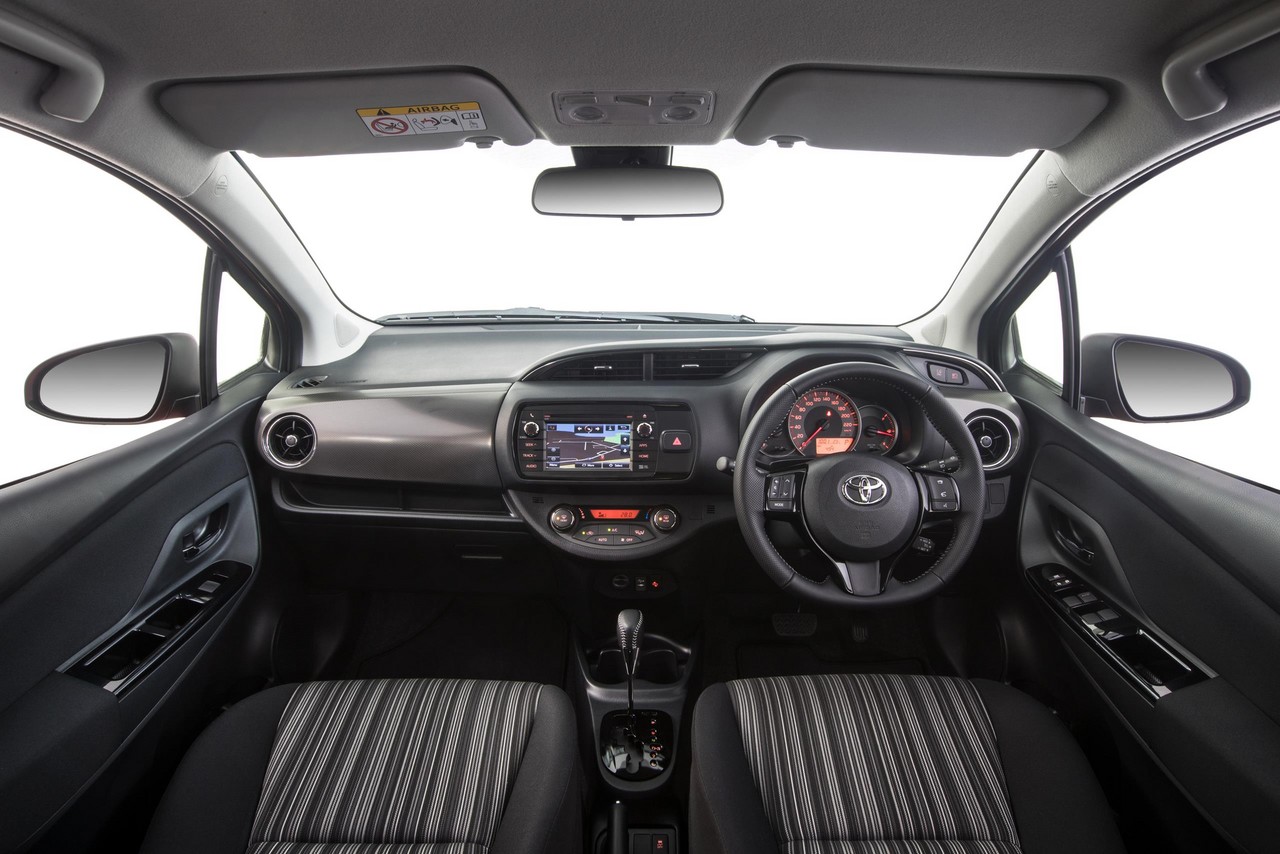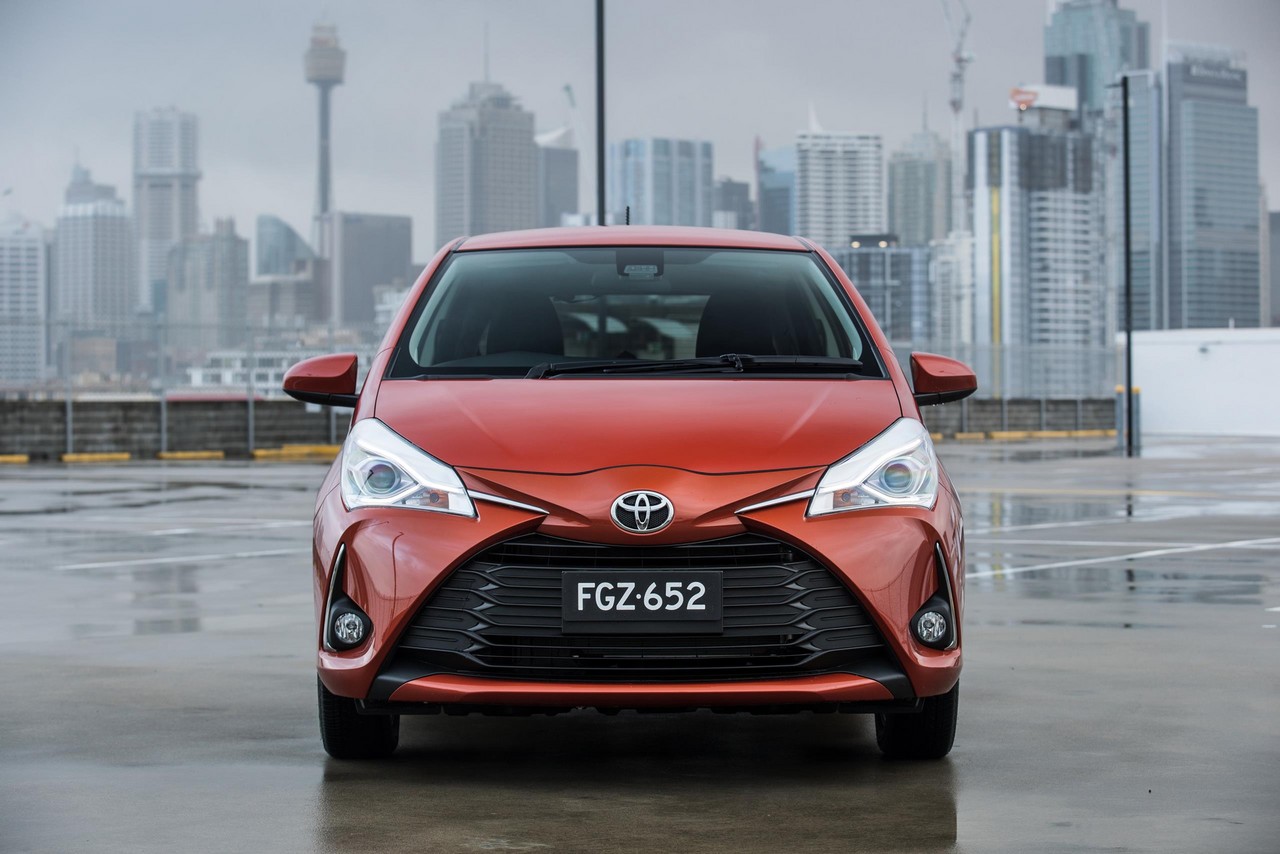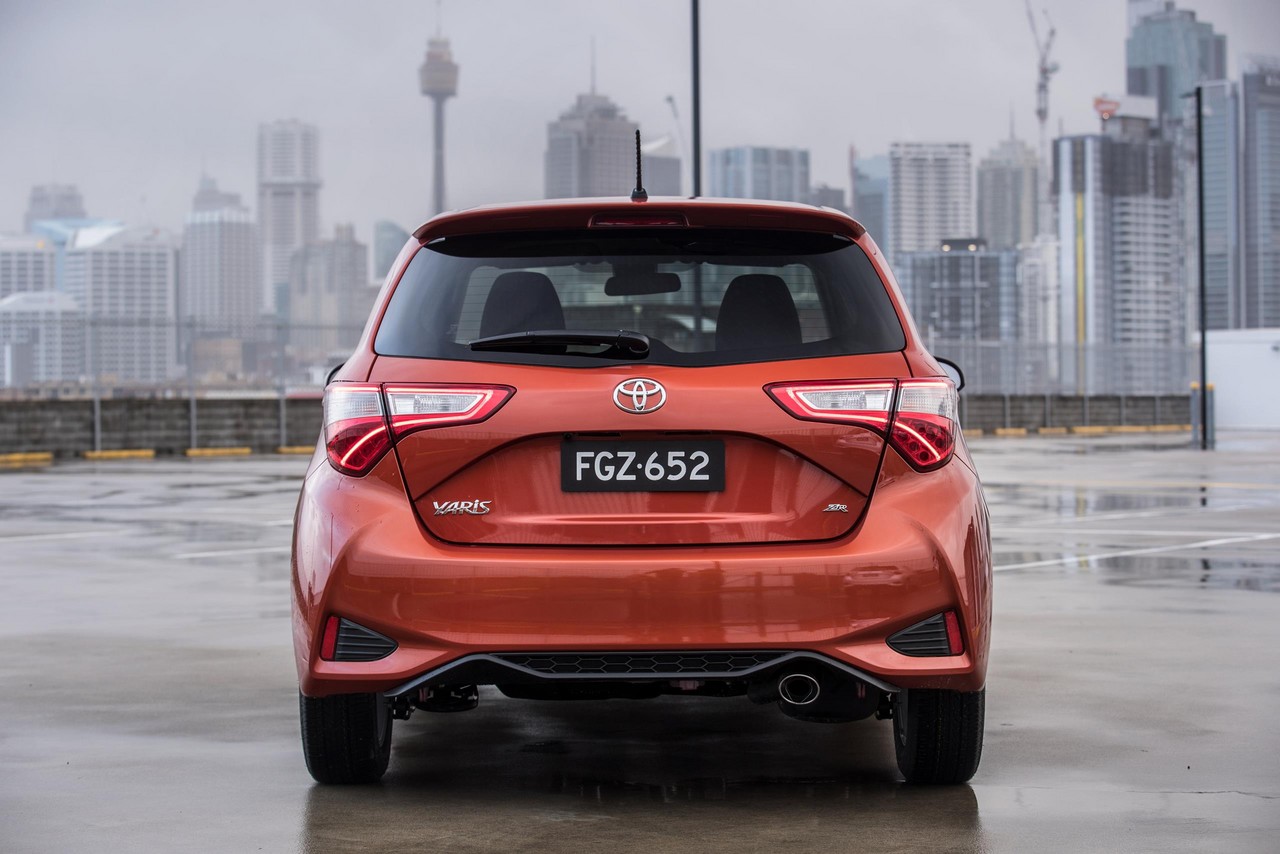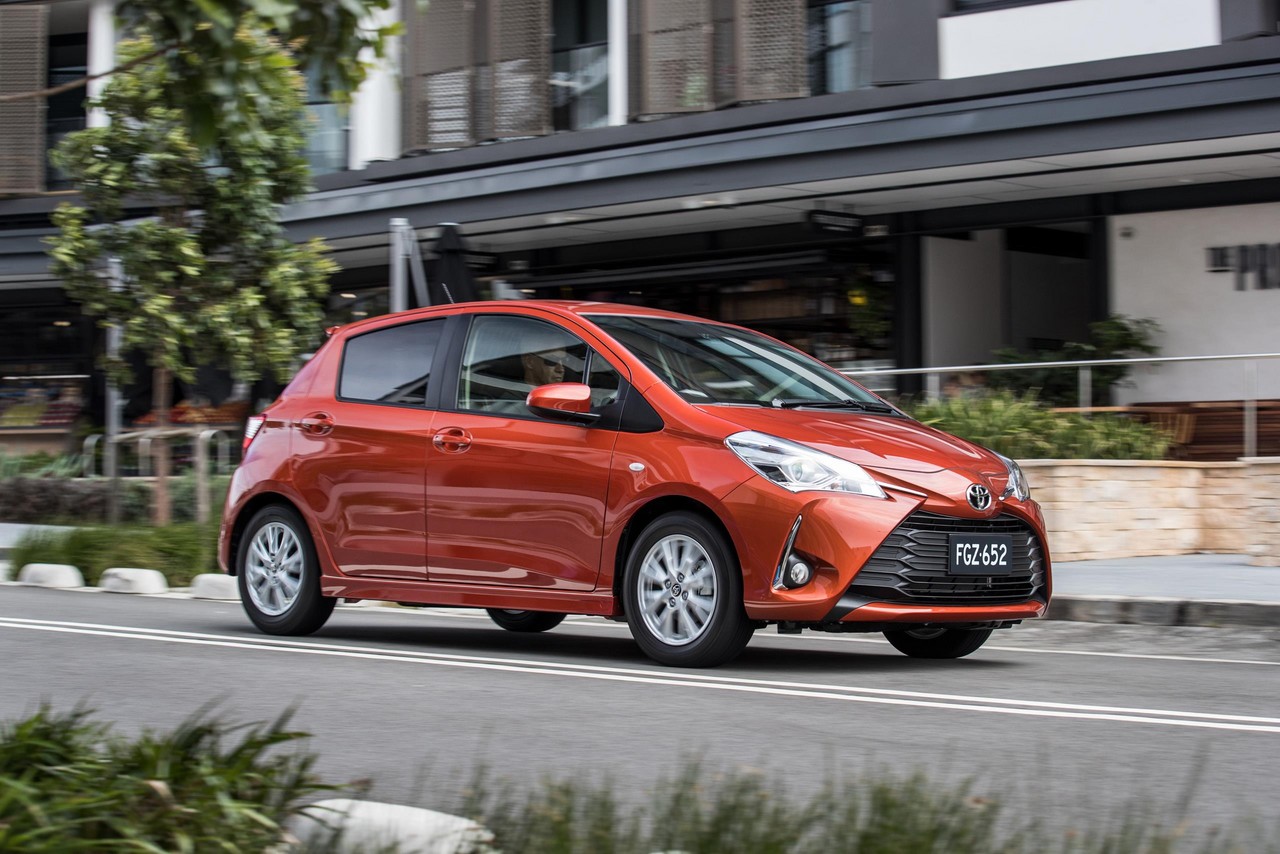
- Proven 1.3-litre 2NZ-FE and 1.5-litre 1NZ-FE petrol engines
- Spacious interior
- Well-insulated cabin
- Accomplished ride/handling balance
- Steering is well-weighted…
- … but lacks feel
- Performance of 1.3-litre 2NZ-FE engine only adequate
- Four-speed auto and five-speed manual transmissions lack ratios of rivals
- Typically strong resale value
Review: Toyota XP130.I Yaris (2011-14)
Overview
Released in October 2011, the Toyota XP130 Series I (XP130.I) Yaris was available as a light, three- or five-door hatchback. Manufactured in Japan, the entry-level Yaris YR was powered by a 1.3-litre four-cylinder petrol engine, while the YRS, YRX and ZR had a more powerful 1.5-litre unit.
2NZ-FE and 1NZ-FE engines
The 1.3-litre 2NZ-FE and 1.5-litre 1NZ-FE four-cylinder petrol engines had aluminium blocks and cylinder heads, double overhead camshafts, four valves per cylinder, variable intake valve timing (VVT-i) and compression ratios of 10.5:1. Transmission options consisted of four-speed automatic or five-speed manual units.
While the engines were carried over from the XP90 Yaris , reduced frictional losses, improved heat management and tuning contributed to improved fuel economy.
| Body | Engine | Variant | Trans. | Peak power | Peak torque |
|---|---|---|---|---|---|
| 3 door hatch | 1.3-litre petrol I4 (2NZ-FE) |
YR | 5sp man., 4sp auto |
63 kW at 6000 rpm | 121 Nm at 4400 rpm |
| 1.5-litre petrol I4 (1NZ-FE) |
YRS | 5sp man., 4sp auto |
80 kW at 6000 rpm | 141 Nm at 4200 rpm | |
| ZR | 5sp man. | ||||
| 5 door hatch | 1.3-litre petrol I4 (2NZ-FE) |
YR | 5sp man., 4sp auto |
63 kW at 6000 rpm | 121 Nm at 4400 rpm |
| 1.5-litre petrol I4 (1NZ-FE) |
YRS | 5sp man., 4sp auto |
80 kW at 6000 rpm | 141 Nm at 4200 rpm | |
| YRX | 4sp auto |
Dimensions and body
Compared to the Toyota XP90 Yaris , the XP130 Yaris had a 50 mm longer wheelbase (at 2510 mm), was 100 mm longer (3885 mm) and 20 mm lower (1510 mm). Furthermore, the sculpted front seats improved rear seat leg room and the cargo floor was 25 per cent longer.
Despite its greater dimensions, the XP130 Yaris achieved a 20 kg mass reduction. The XP130 Yaris was also more refined due to its greater body rigidity (achieved through the increased use of high-tensile steel) and additional soundproofing.
Suspension and steering
The Toyota XP130 Yaris had MacPherson strut front suspension and a torsion beam rear axle. Furthermore, the XP130 Yaris had rack-and-pinion steering with electric power assistance; the steering gear ratio was 12.76:1, while the steering wheel required 2.69 turns from lock to lock.
Safety equipment
Standard safety equipment for the Toyota XP130 Yaris included dual front airbags, a driver’s knee airbag, front side (hip/thorax) airbags, full-length curtain airbags (i.e. for front and rear occupants), ABS, electronic brake force distribution, brake assist, electronic stability control, traction control and front seatbelts with pretensioners and load limiters.
Euro NCAP testing
In Euro NCAP testing , a five-door Toyota Yaris hatch received a five star safety rating which included an 89 per cent adult occupant protection rating and an 81 per cent child occupant protection rating. In the frontal offset and side impact tests, Yaris provided good protection of all body areas. In the pole test, however, the curtain airbag became slightly trapped behind the trim of the windscreen pillar and marginal chest protection was recorded.
Features: Yaris YR, YRS and YRX
Standard features for the Toyota Yaris YR included 5.0J x 14-inch steel wheels with 175/70 R14 tyres, a four speaker audio system with CD player, USB/iPod connectivity, Bluetooth compatibility and voice control, air conditioning, steering wheel audio controls, 60/40 split and folding rear seats, remote central locking, power windows and mirrors, a 12 volt power outlet, trip computer and immobiliser.
The Yaris YRS was further equipped with 5.0J x 15-inch steel wheels with 175/65 R15 tyres, a six speaker audio system with touch-screen display (with ‘picture play’ via SD card) and text/email message reading, cruise control and a premium steering wheel and gearshift.
Beyond this, the Yaris YRX featured 15-inch alloy wheels, climate control air conditioning, satellite navigation system with 6.1-inch touch-screen display (including split-screen viewing, SUNA traffic updates, 3D graphics and DivX playback via USB), front fog lights and automatic headlights. The ZR was similarly equipped, but distinguished by its body kit which included unique bumpers, side skirts, rear roof spoiler, grille, tailpipe diffuser and headlights with dark surrounds.
Brochure
Related links
Review: Toyota XP130.II Yaris (2014-17)
Overview
Released in September 2014, the XP130 Series II (XP130.II) Yaris was solely available as a five-door hatchback. Visually, the XP130.II Yaris could be identified by its new front mask which included a full-width upper grille that extended into the triangular headlights, a deeper front bumper and a large trapezoidal lower intake; other changes included new tail-lights and a redesigned rear bumper with diffuser. Inside, the dashboard and instrument panel surrounds featured a grain finish; other changes included brighter ornamentation for the air vents and door switches.
Significantly, the XP130.II Yaris had a more rigid body due to the adoption of thirty-six (36) additional welding spots, redesigned tunnel bracing for the vehicle floor, a redesigned wheelhouse area, a thicker dashboard bulkhead structure, a stiffened instrument panel beam and a reinforced rear bumper attachment.
For improved ride comfort, the rear suspension was redesigned to incorporate a stiffer torsion beam which was combined with softer coil springs and long polyurethane bound stoppers. Furthermore, the front suspension introduced rebound springs within the shock absorbers (for increased front anti-roll stiffness) and included softer coil springs.
Other changes for the XP130.II Yaris included:
- New control logic for the electric power-assisted steering to provide more direct and linear responses to steering inputs;
- For improved sound insulation, a re-designed dashboard silencer, ‘noise-optimised’ carpets and upgraded materials for the instrument panel and console box;
- Automatic flashing of the hazard lamps under emergency braking.
| Body | Engine | Variant | Trans. | Peak power | Peak torque |
|---|---|---|---|---|---|
| 5 door hatch | 1.3-litre petrol I4 (2NZ-FE) |
Ascent | 5sp man., 4sp auto |
63 kW at 6000 rpm | 121 Nm at 4400 rpm |
| 1.5-litre petrol I4 (1NZ-FE) |
SX | 5sp man., 4sp auto |
80 kW at 6000 rpm | 141 Nm at 4200 rpm | |
| ZR | 4sp auto |
Features: Yaris Ascent, SX and ZR
Compared to the XP130.I Yaris YR, the Yaris Ascent was further equipped with 15-inch steel wheels, a six speaker sound system, a 6.1-inch display audio screen (with touch, drag and flick operations), a reversing camera and telescopic steering wheel adjustment.
Compared to the Ascent, the Yaris SX was further equipped with front fog lights, a premium three-spoke steering wheel and gearshift lever, and rear privacy glass
The Yaris ZR was distinguished by its 15-inch alloy wheels, satellite navigation system with SUNA traffic monitoring, voice recognition, climate control air conditioning, sports front seats, LED headlights, sports steering wheel and rear spoiler. The Yaris ZR was also fitted with the ‘Toyota Link’ connectivity system which could connect with compatible smartphones to deliver apps via the 6.1-inch display.
Brochure
Related links
Review: Toyota XP130.III Yaris (2017-19)
Overview
Released in Australia in March 2017, the Toyota XP130.III Yaris introduced updated styling, Euro 5 emissions compliant engines and, for the Yaris ZR, additional safety equipment.
The Toyota XP130.III Yaris was styled by Toyota’s ED2 design studio in France and could be identified by its body-coloured upper grille, new headlights with a forked frame around the main lamp, more angular lower grille with pronounced horizontal bars and, for the Yaris SX and ZR, vertical chrome highlights on the outside of the fog light recesses. Inside, ‘modern gloss black ornamentation’ was introduced for the steering wheel, audio unit surround and around the gear-knob base (replacing silver finishes).
| Body | Engine | Variant | Trans. | Peak power | Peak torque |
|---|---|---|---|---|---|
| 5 door hatch | 1.3-litre petrol I4 (2NZ-FE) |
Ascent | 5sp man., 4sp auto |
63 kW at 6000 rpm | 121 Nm at 4400 rpm |
| 1.5-litre petrol I4 (1NZ-FE) |
SX | 5sp man., 4sp auto |
80 kW at 6000 rpm | 141 Nm at 4200 rpm | |
| ZR | 4sp auto |
Safety equipment
For the Toyota XP130.III Yaris ZR, standard safety equipment was extended to include –
- Pre-Collision System with Autonomous Emergency Braking (AEB): The pre-collision system used a front-mounted laser to monitor the road ahead, warning the driver of an imminent collision risk and preparing the brakes to deliver emergency braking the moment the brake pedal was pressed. If the driver failed to respond to the warning, the system would trigger Autonomous Emergency Braking to slow the car to reduce the severity of any impact;
- Automatic High Beam: detected both the headlights of oncoming traffic and the tail lights of vehicles ahead, automatically switching between low and high beam to avoid dazzling other drivers, while maintaining the best possible illumination for night-time driving; and,
- Lane Departure Alert: monitored lane markings on the road surface and helped prevent accidents caused by the vehicle moving out of its lane. If the Yaris began to deviate from its lane without the turn indicators having been used, the system alerted the driver via visual and audible warnings.
For the Yaris Ascent and SX, these items were available as a $650 option.
Features: Yaris Ascent, SX and ZR
Compared to the Toyota XP130.II Yaris, standard features for the XP130.III Yaris were largely unchanged.
Related links
